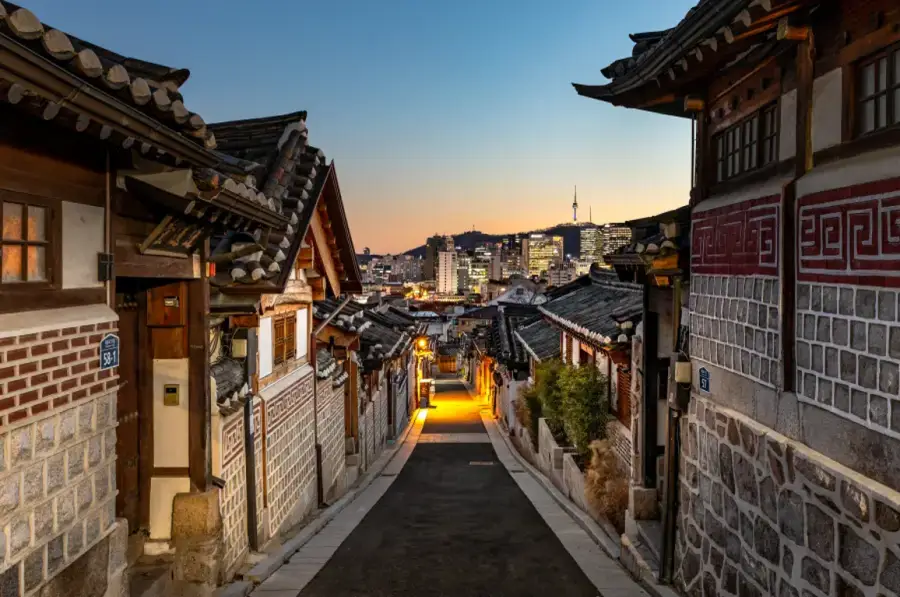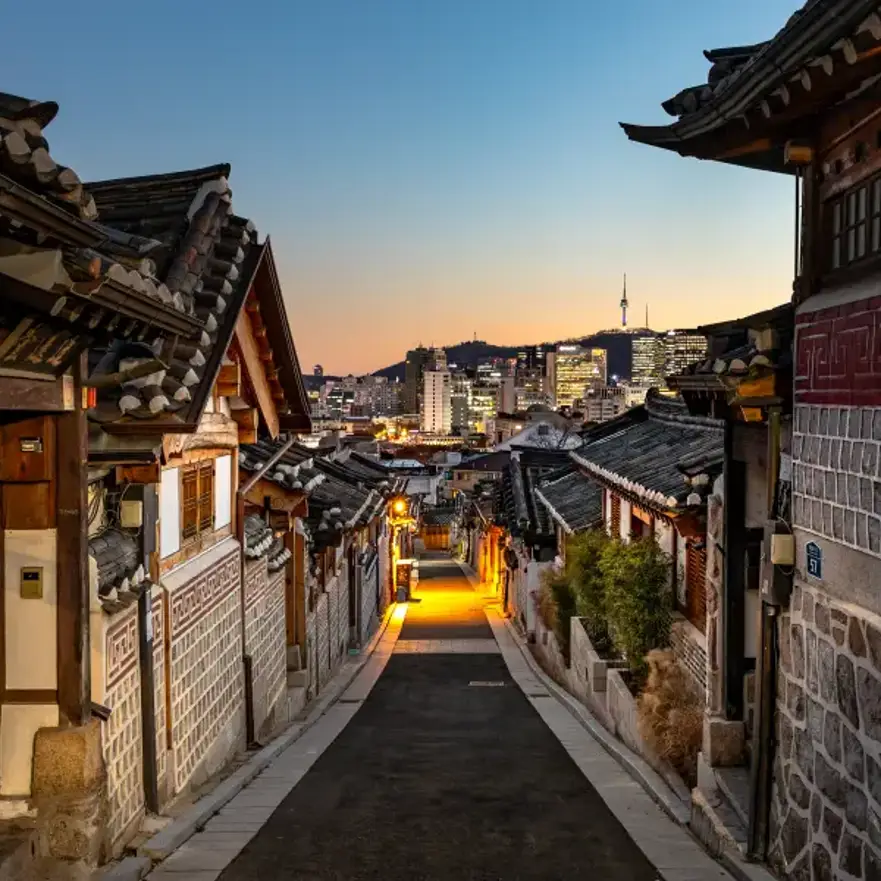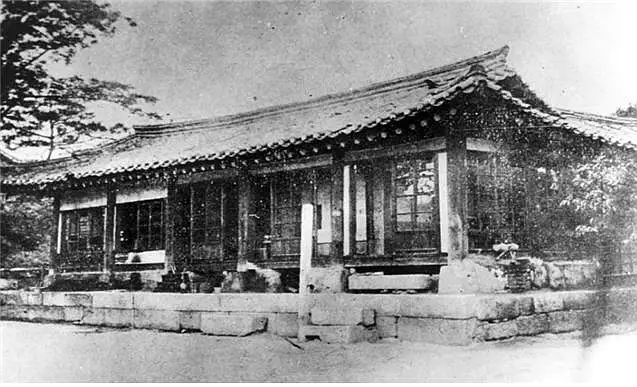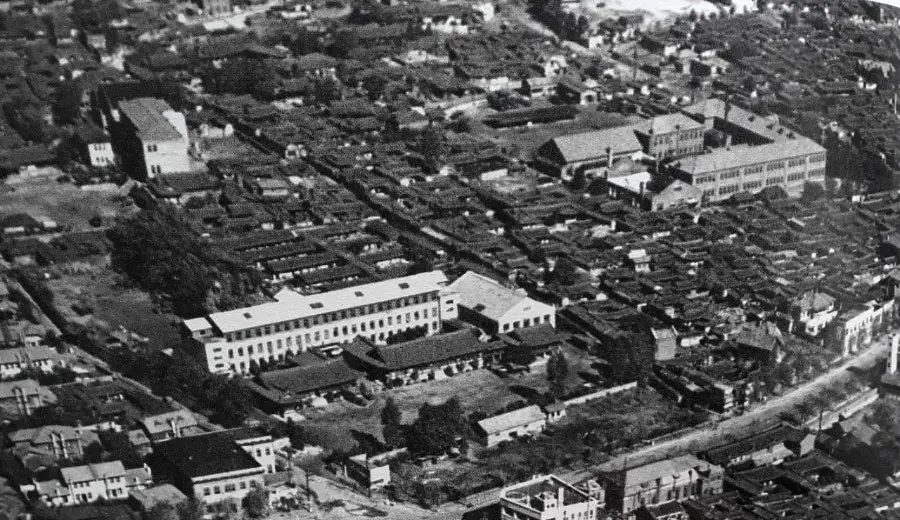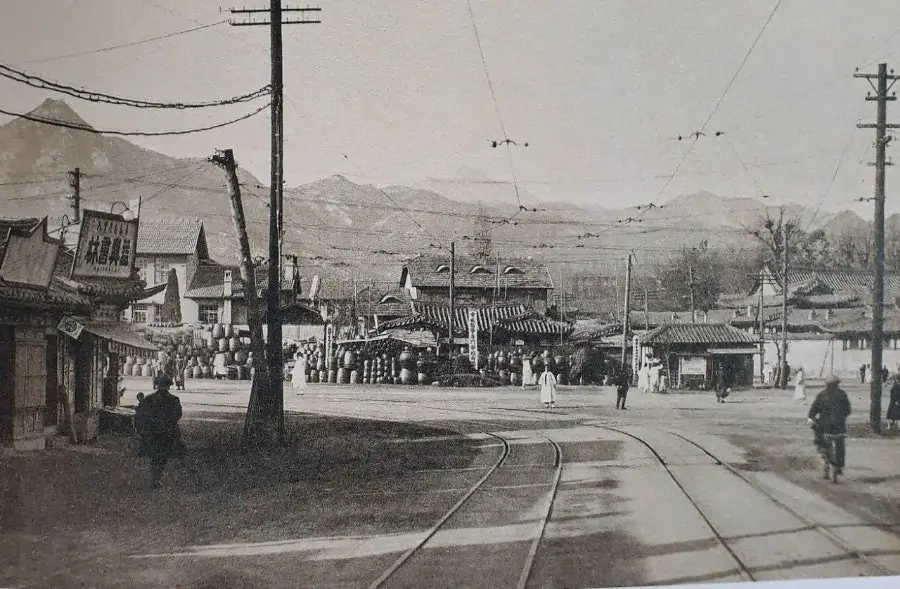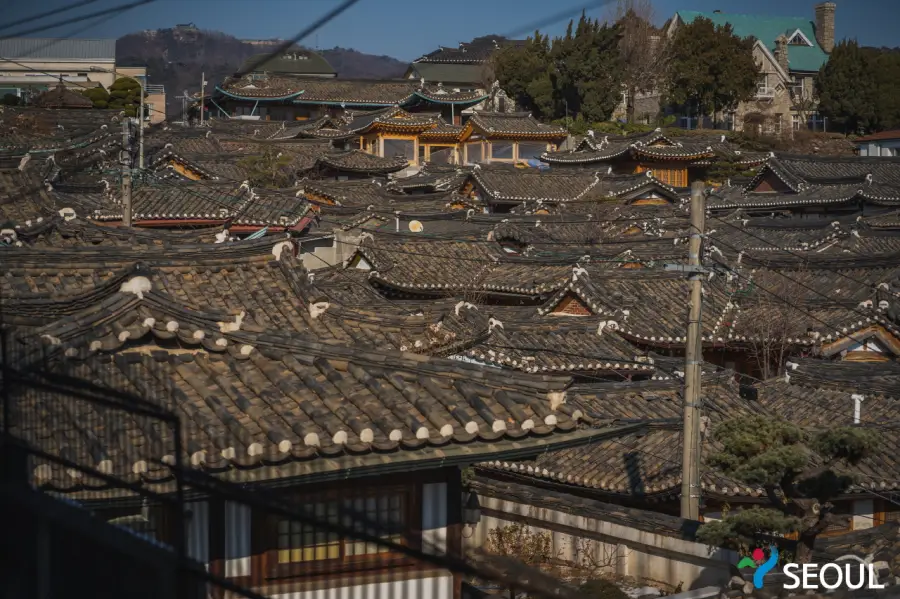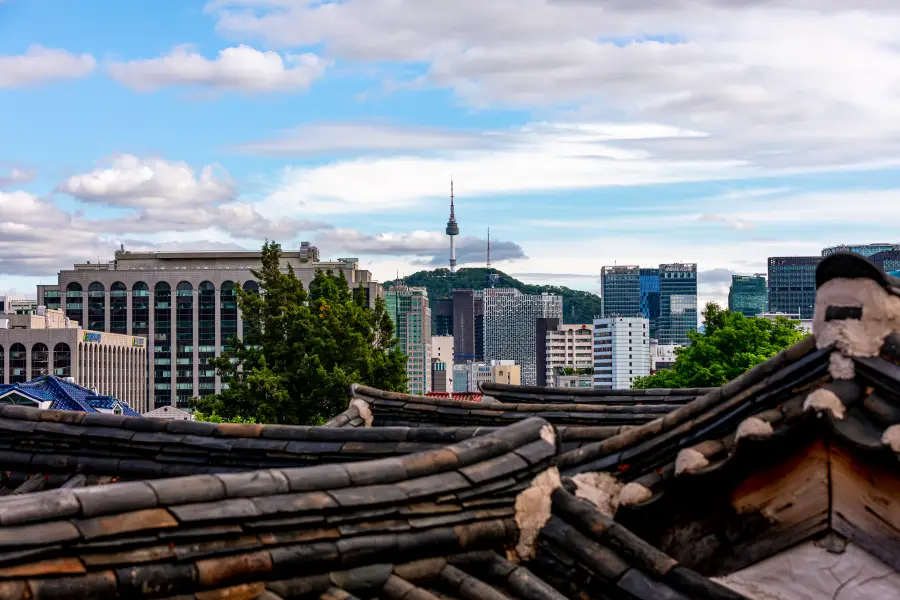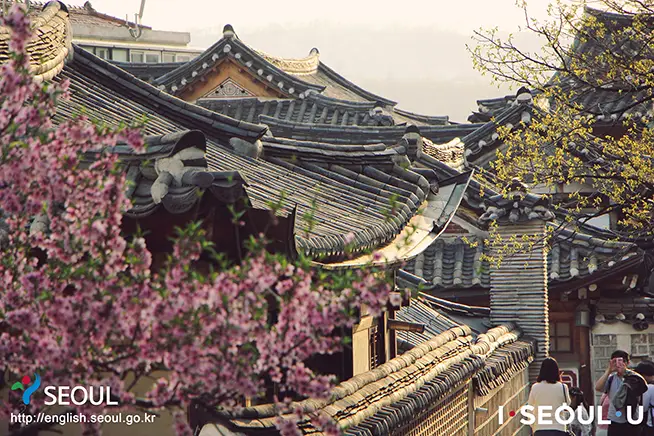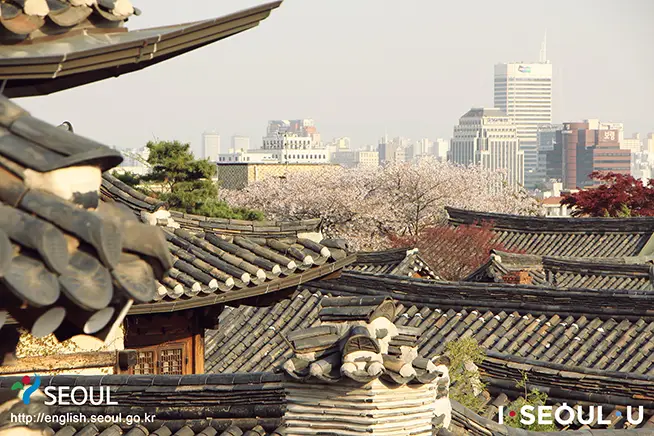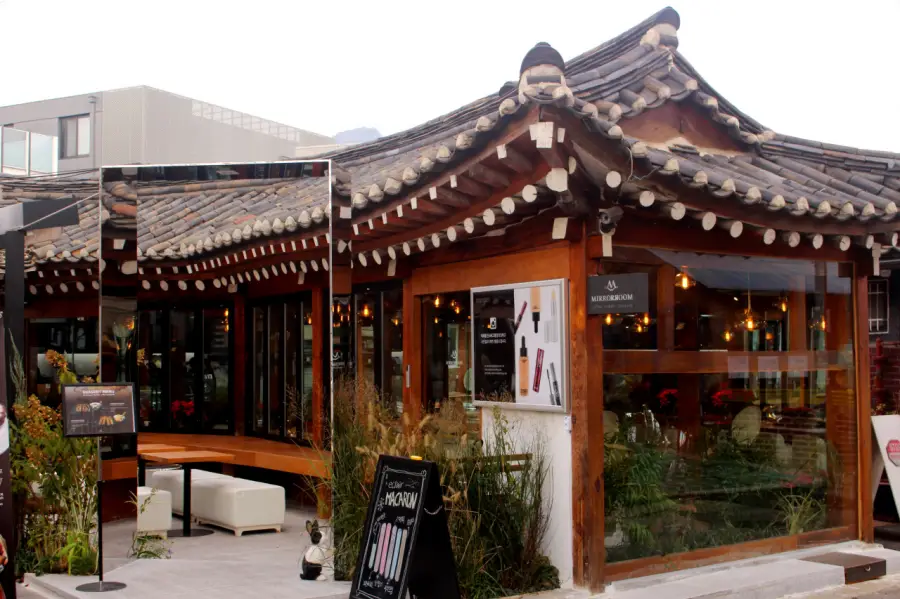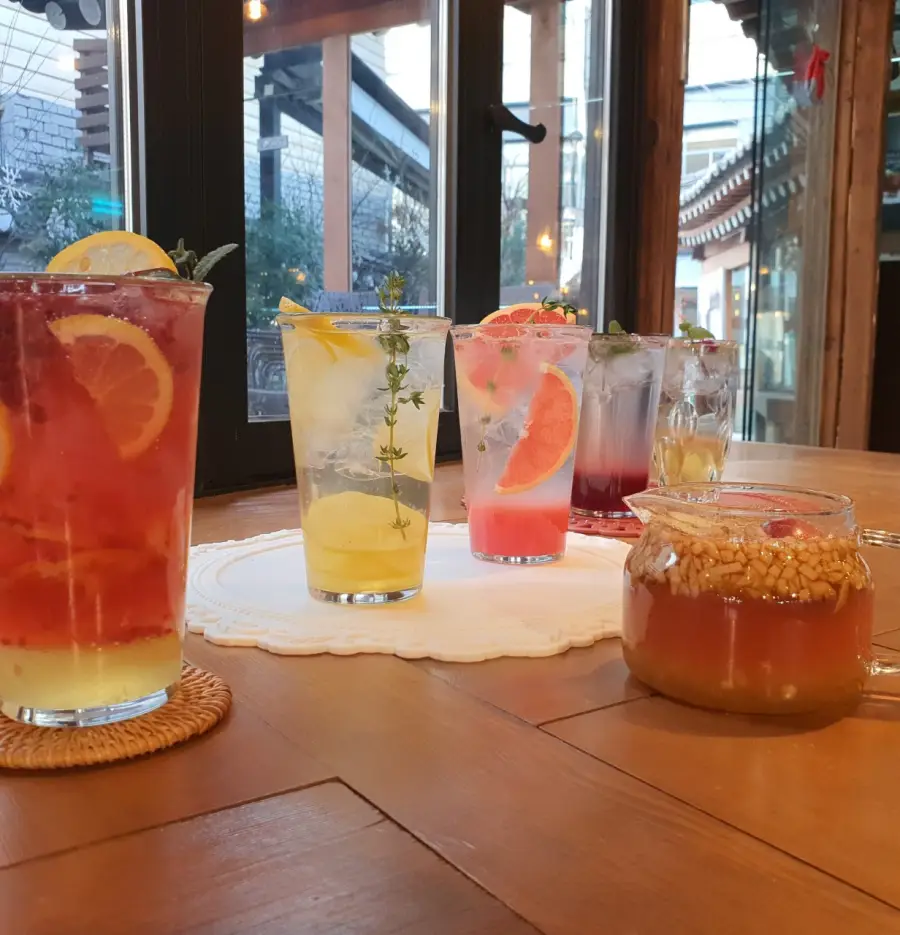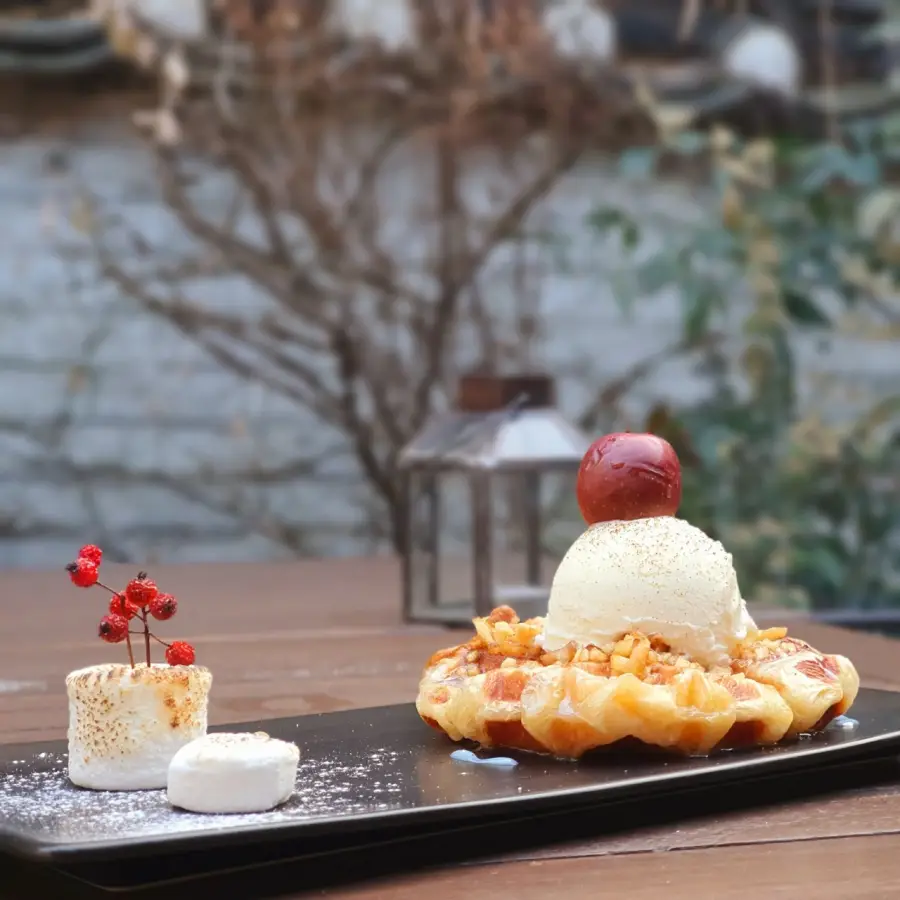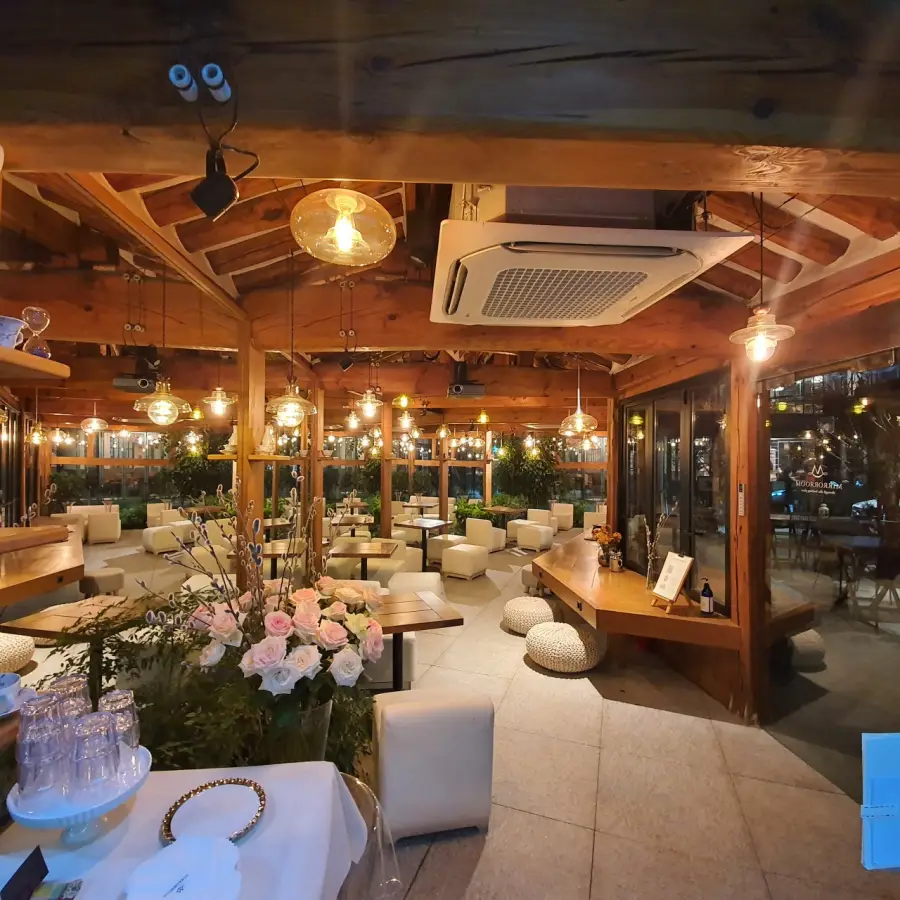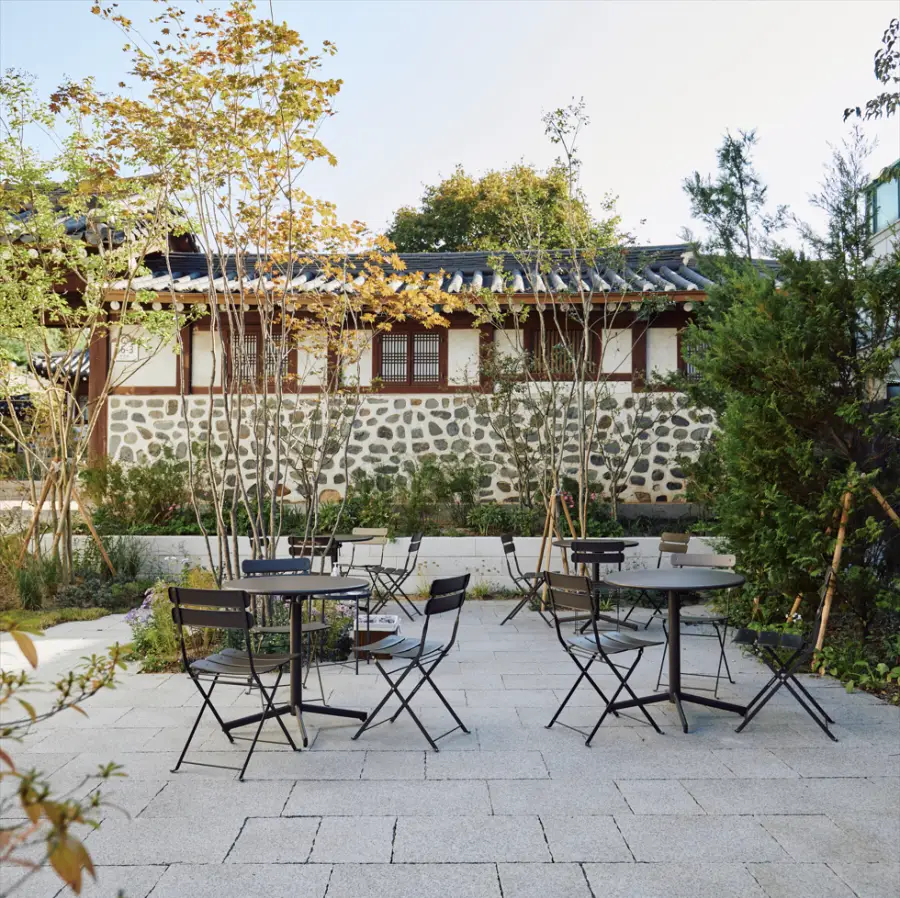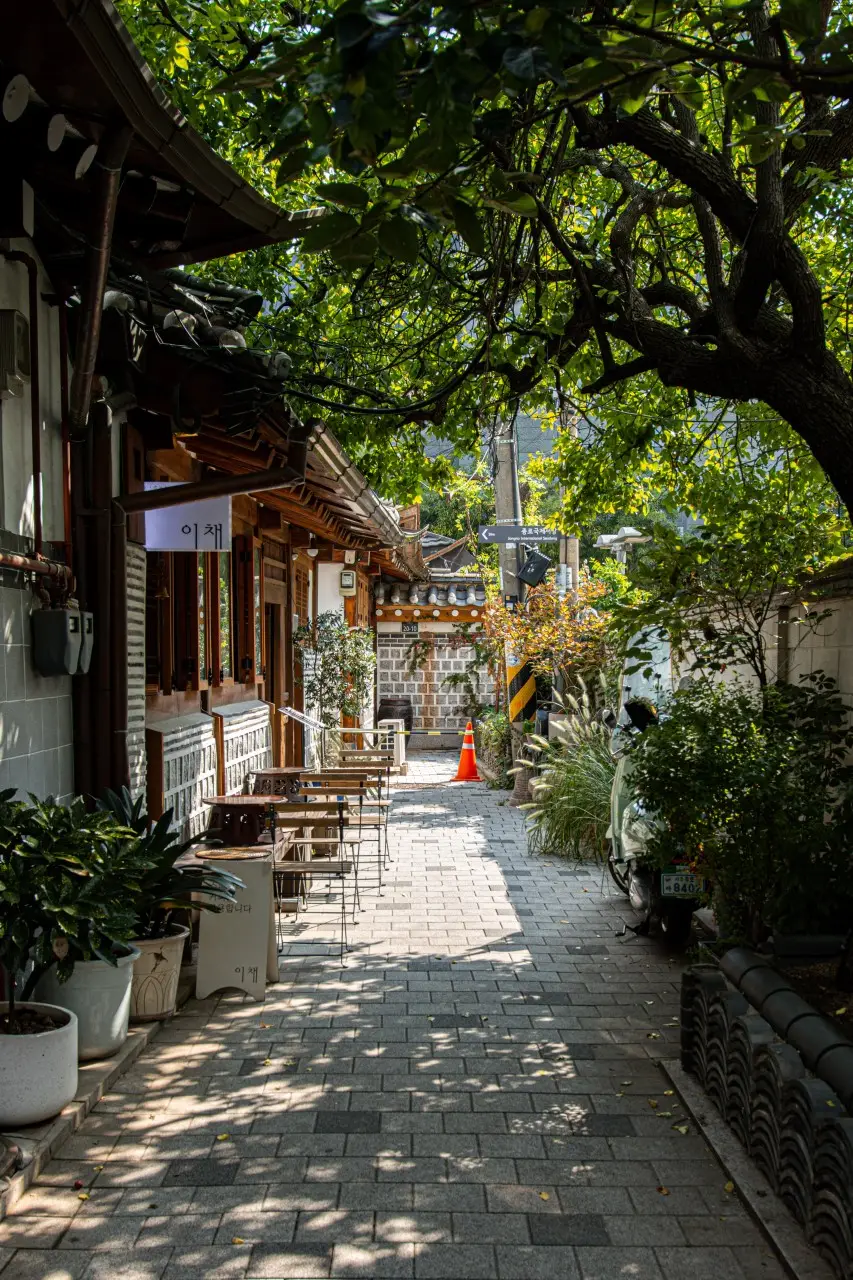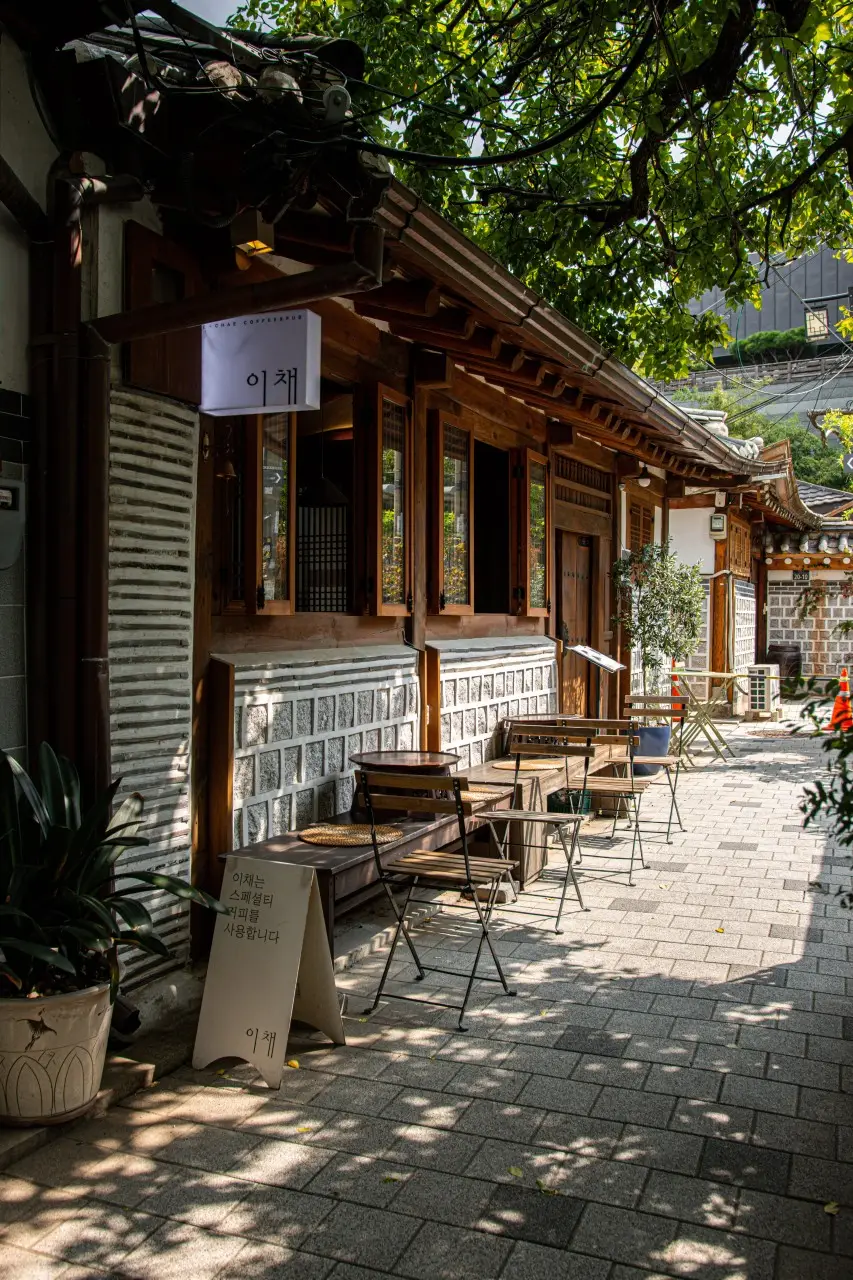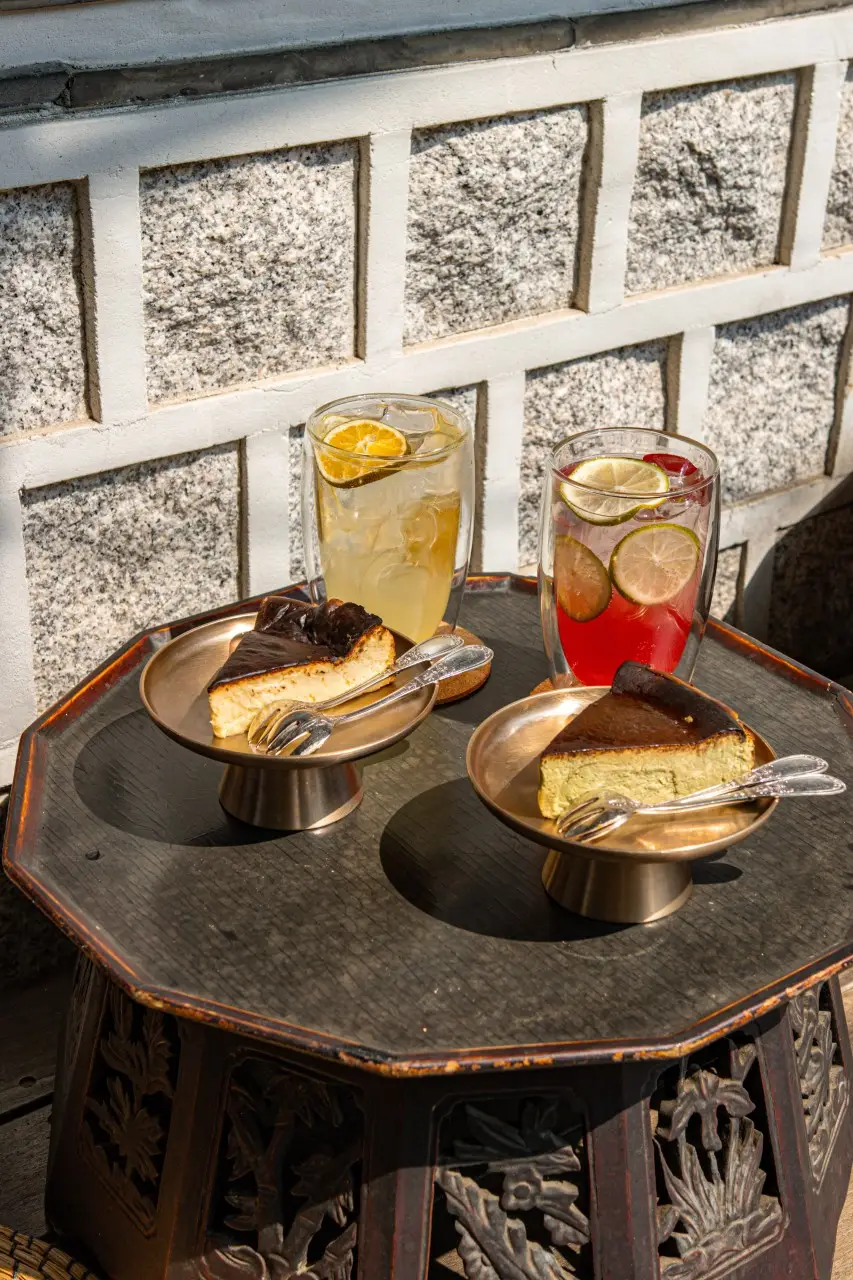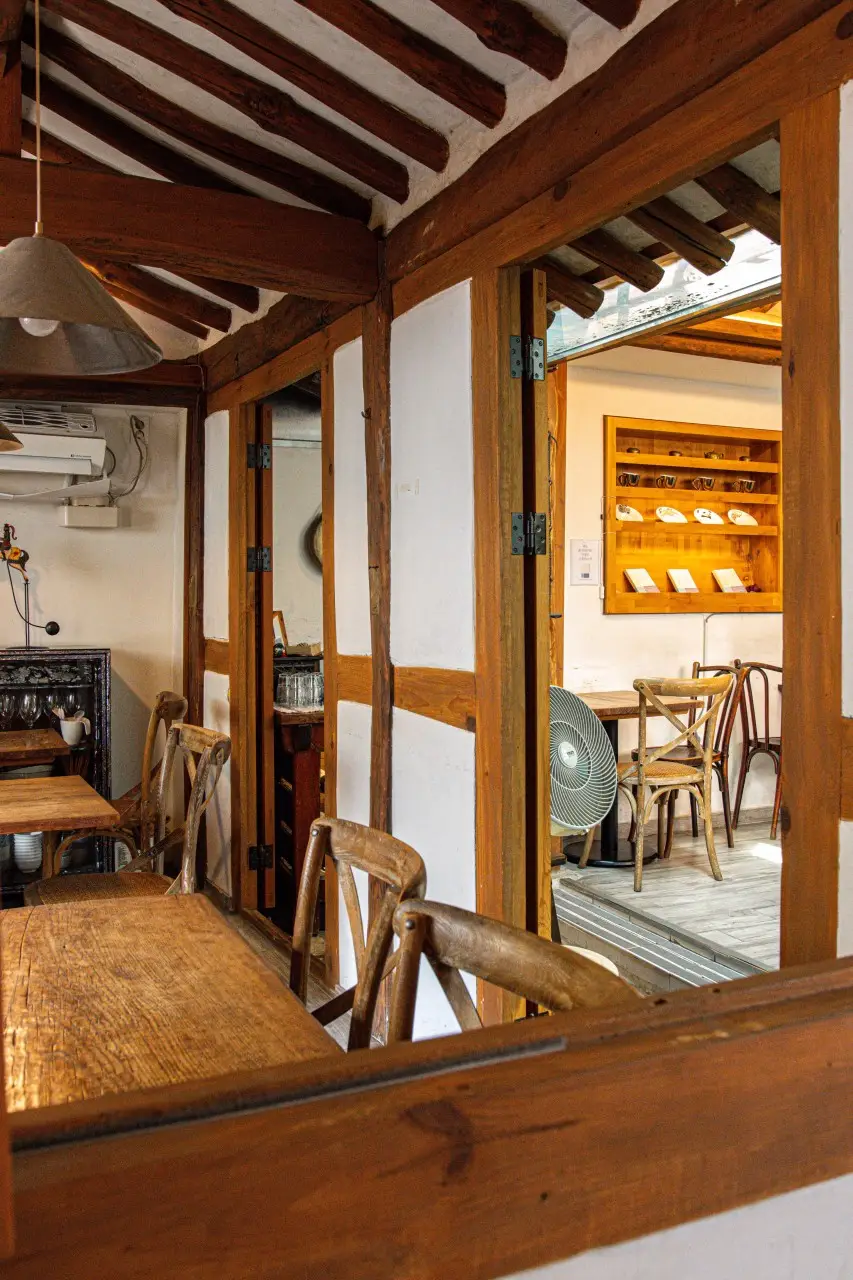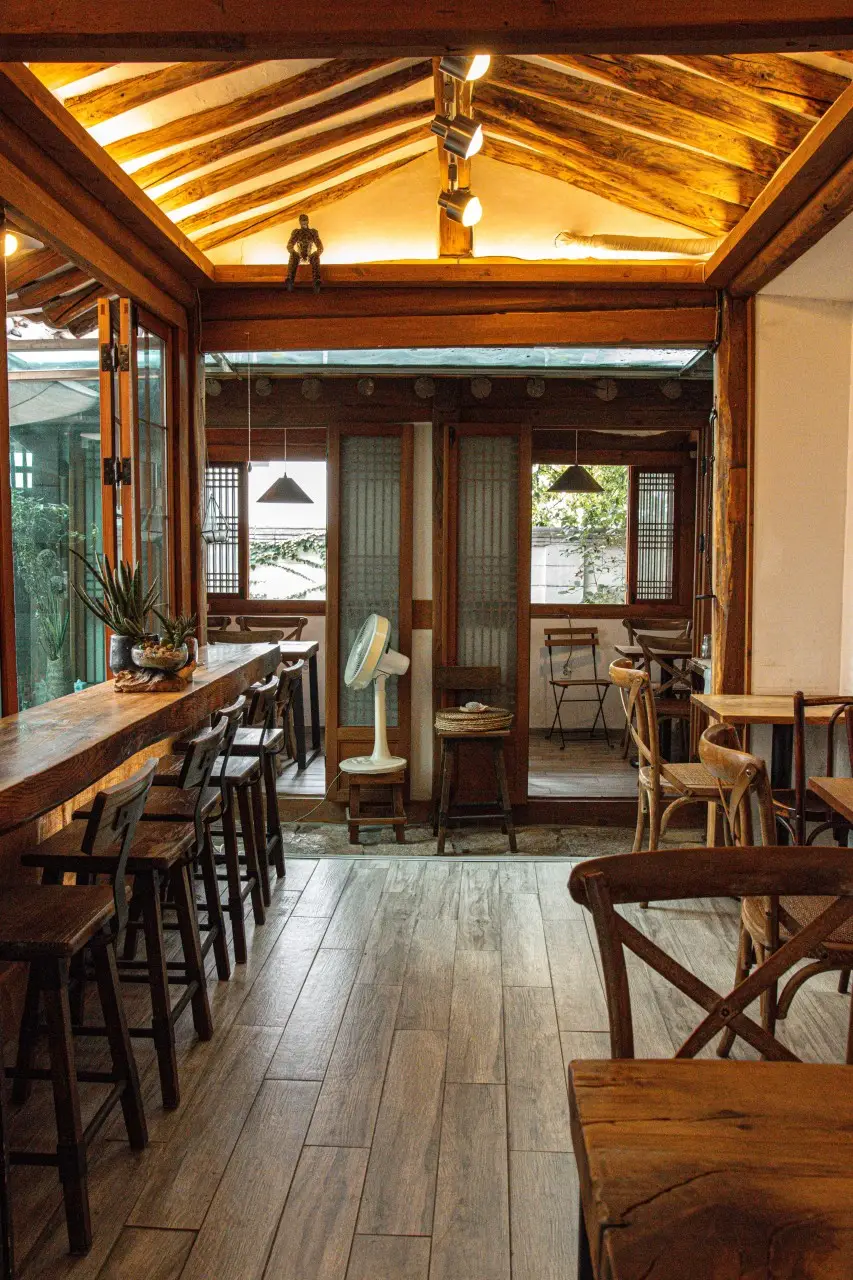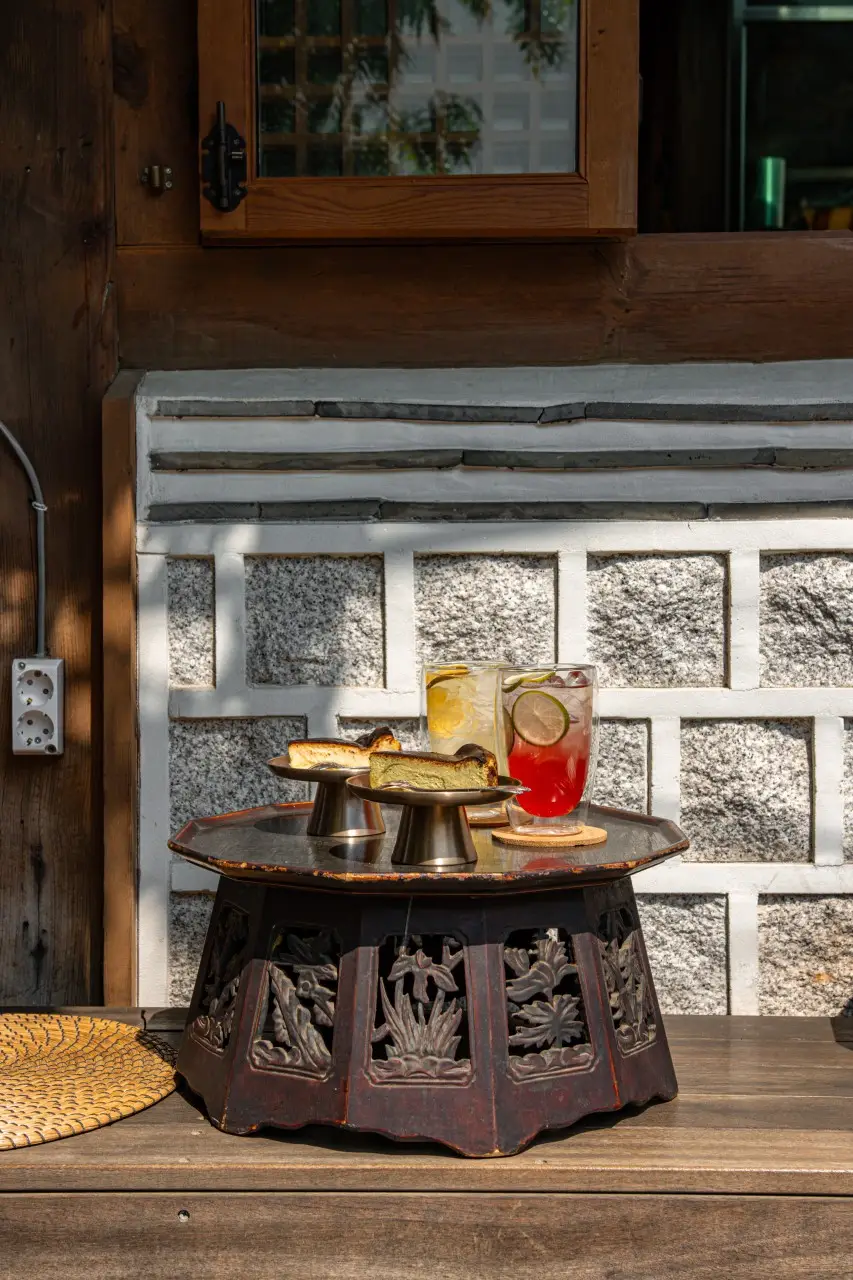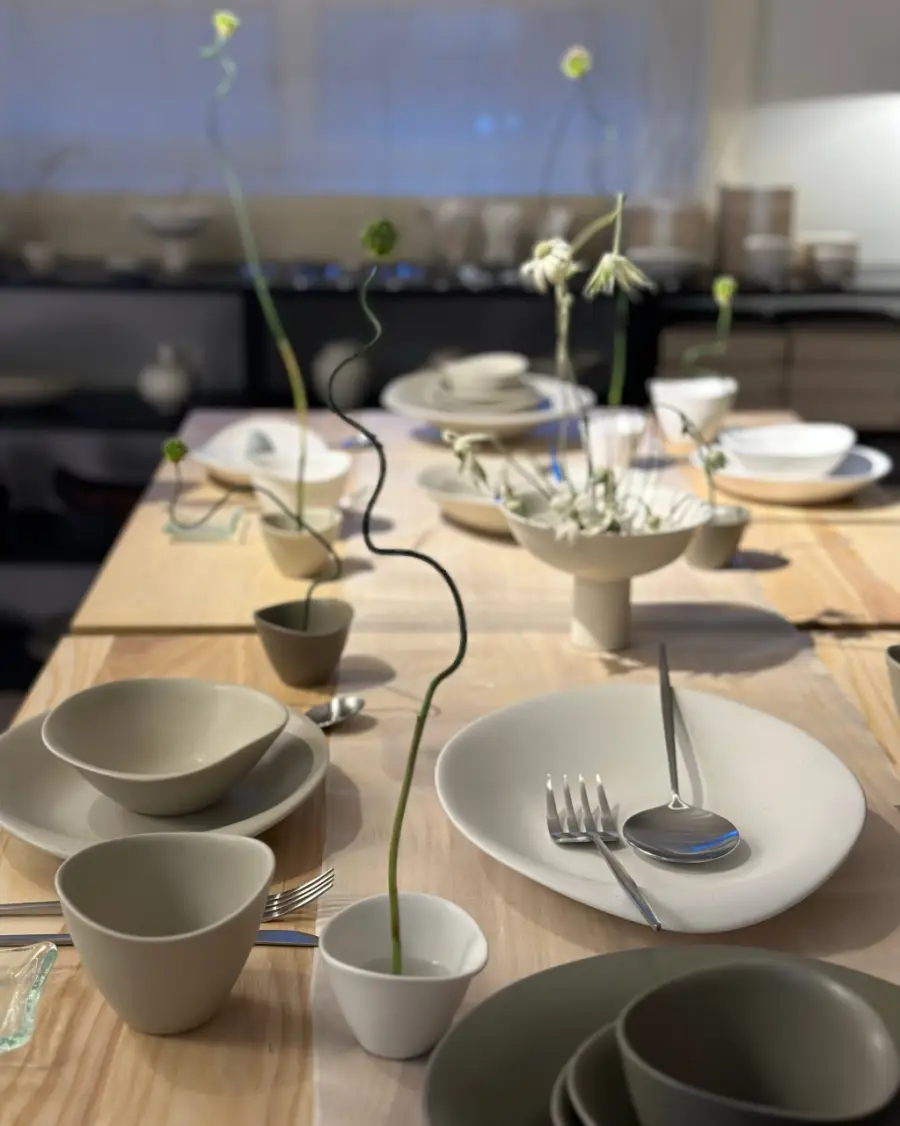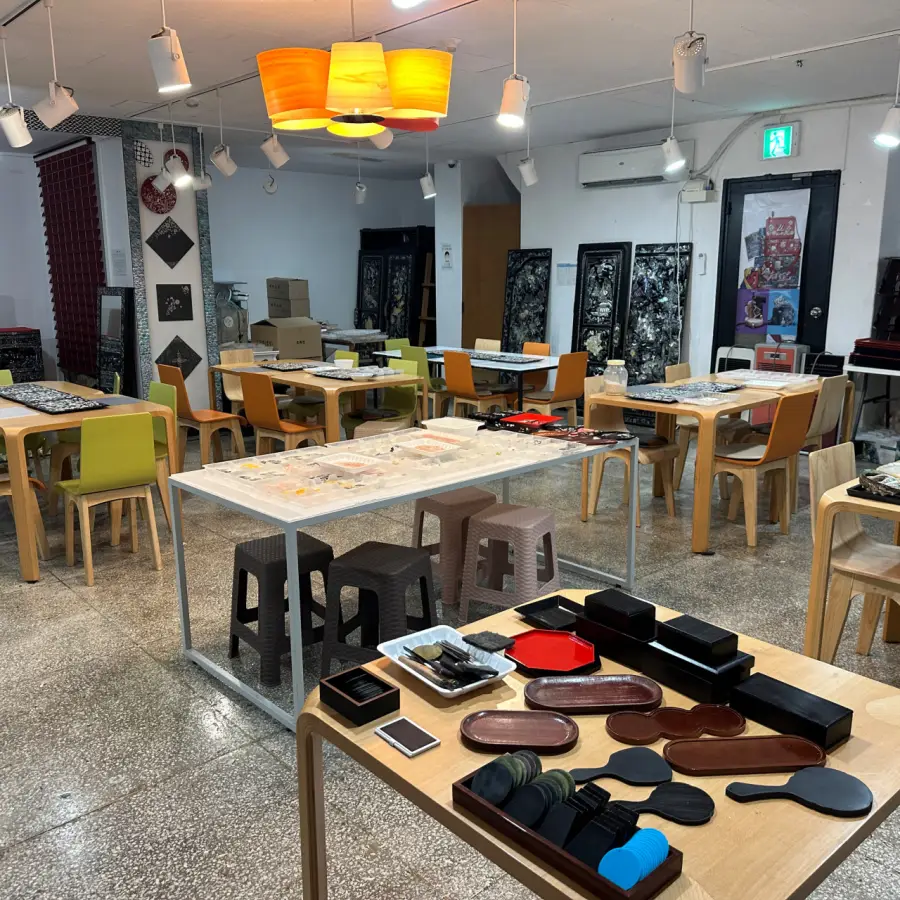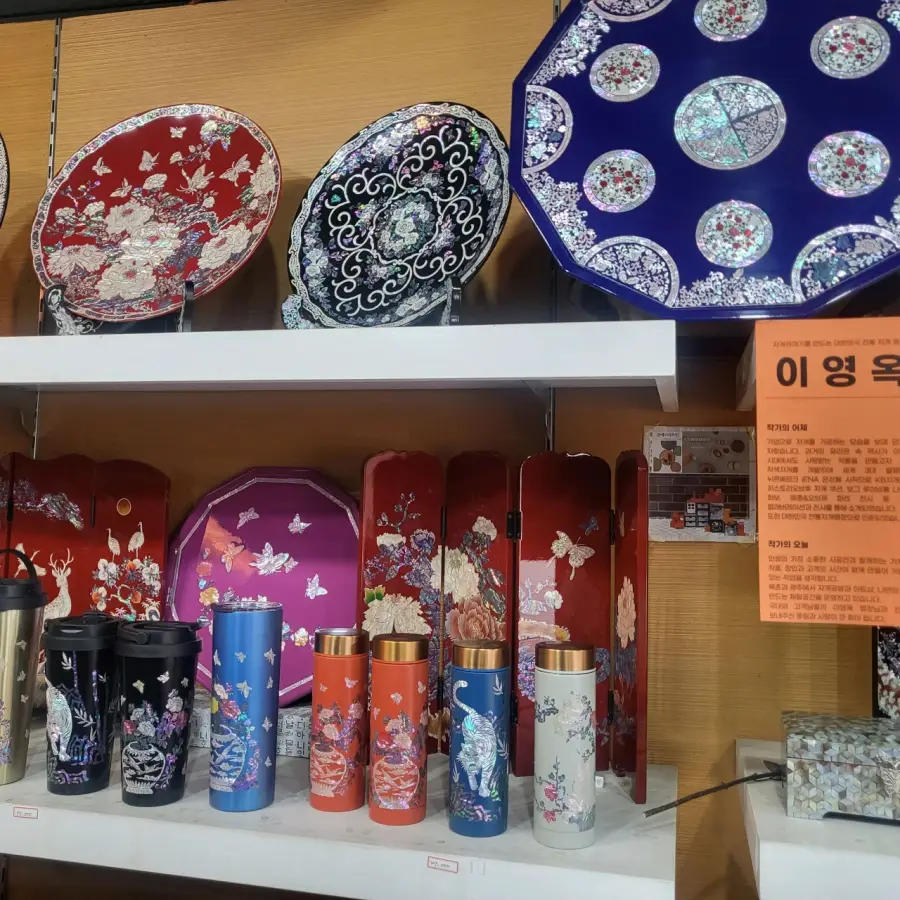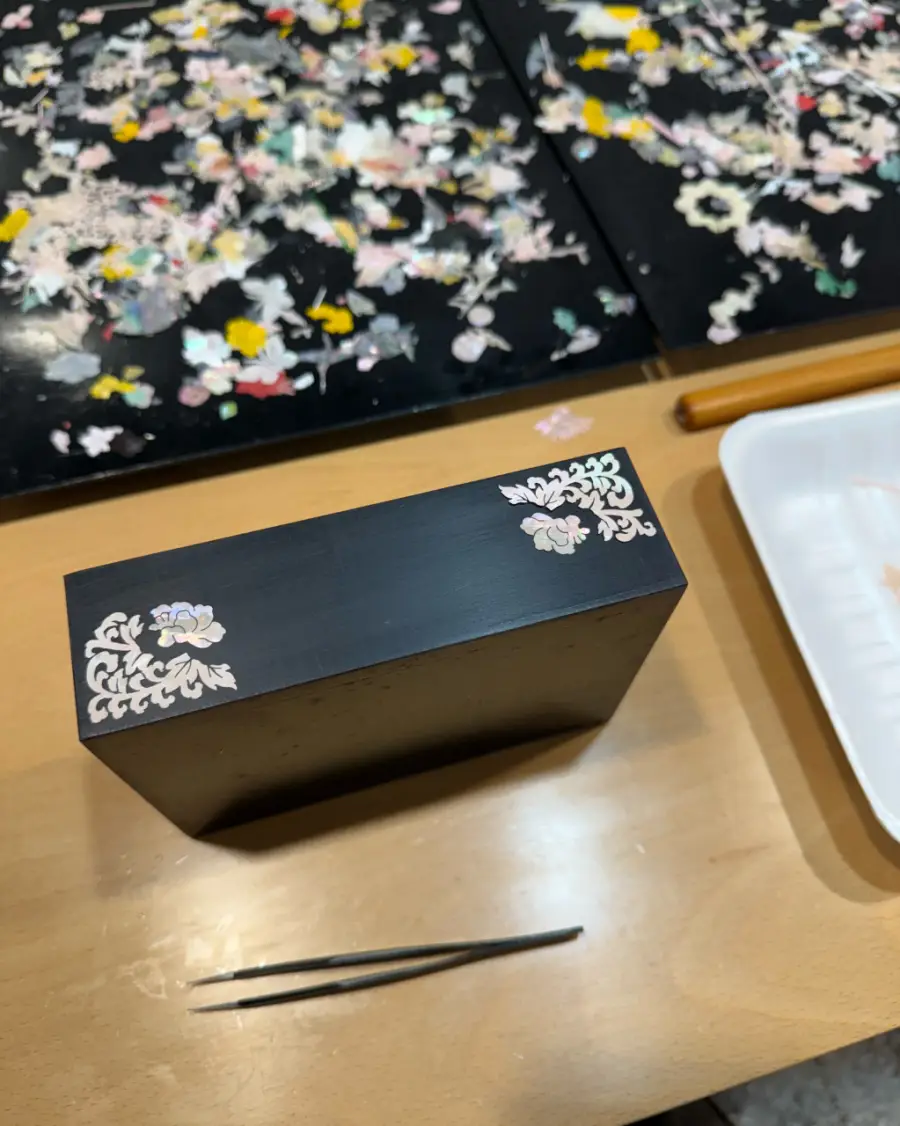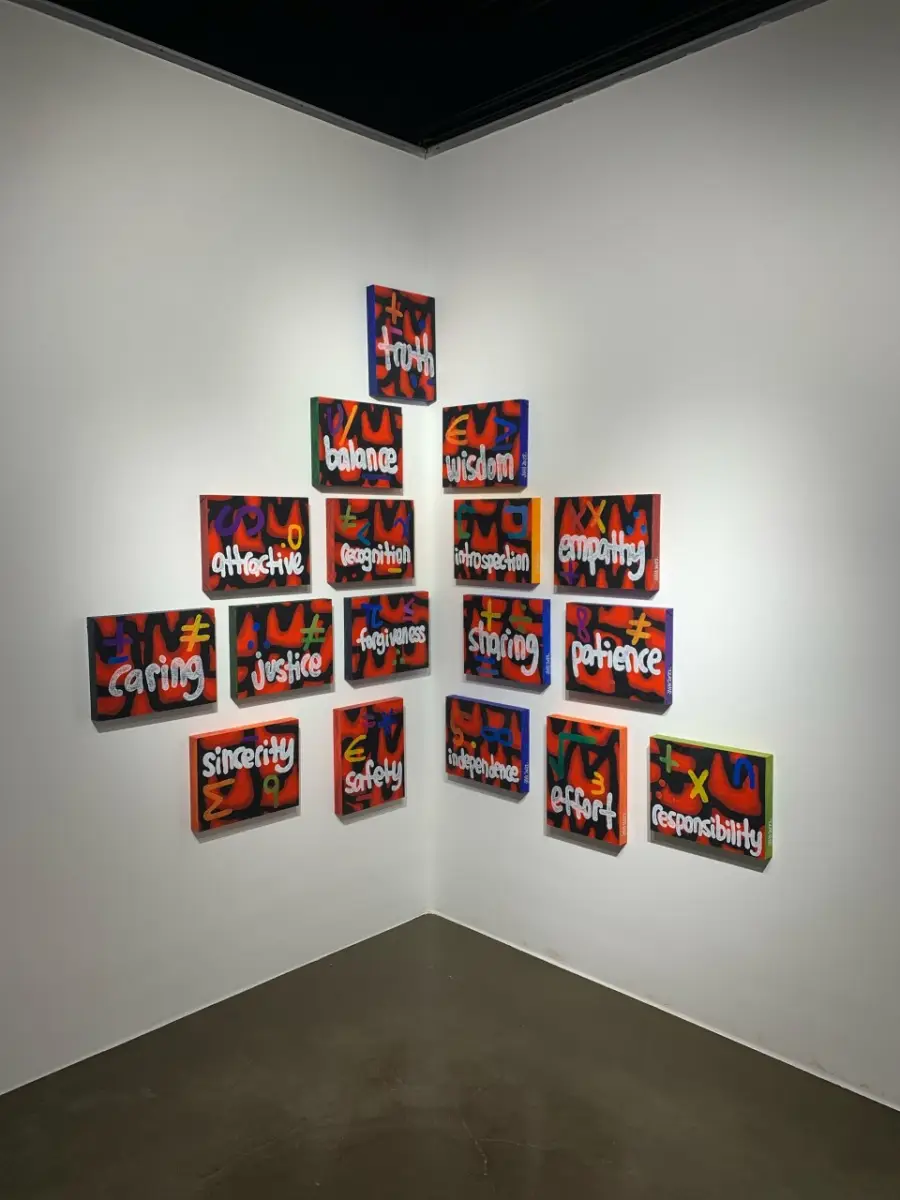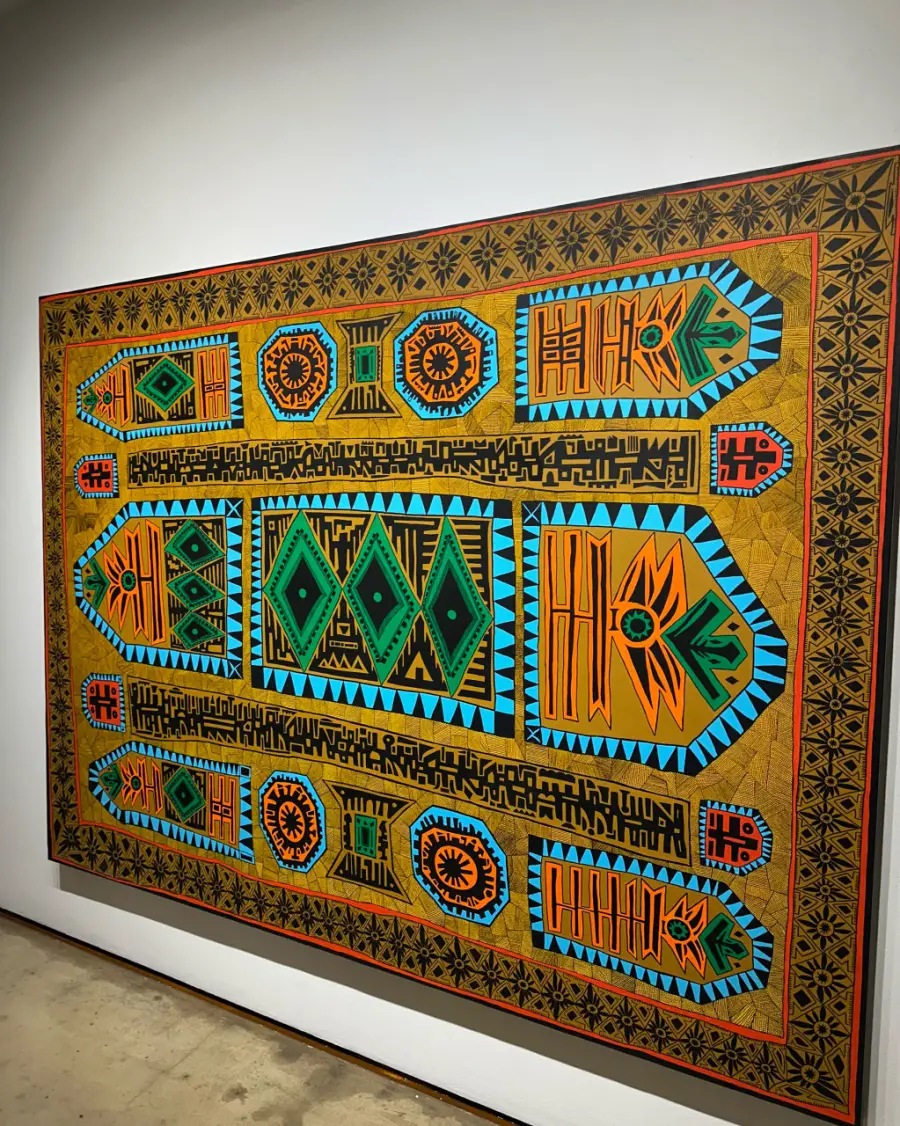Bukchon Hanok Village
“The Most Beautiful Scenery in Seoul, Painted by Traditional Tiled Roofs”
Welcome to Bukchon Hanok Village, a remarkable neighborhood nestled among Seoul’s modern skyscrapers. Here, 600 traditional Korean houses (hanok) are still home to local residents, offering visitors a chance to experience authentic traditional Korean living rather than just another tourist attraction.
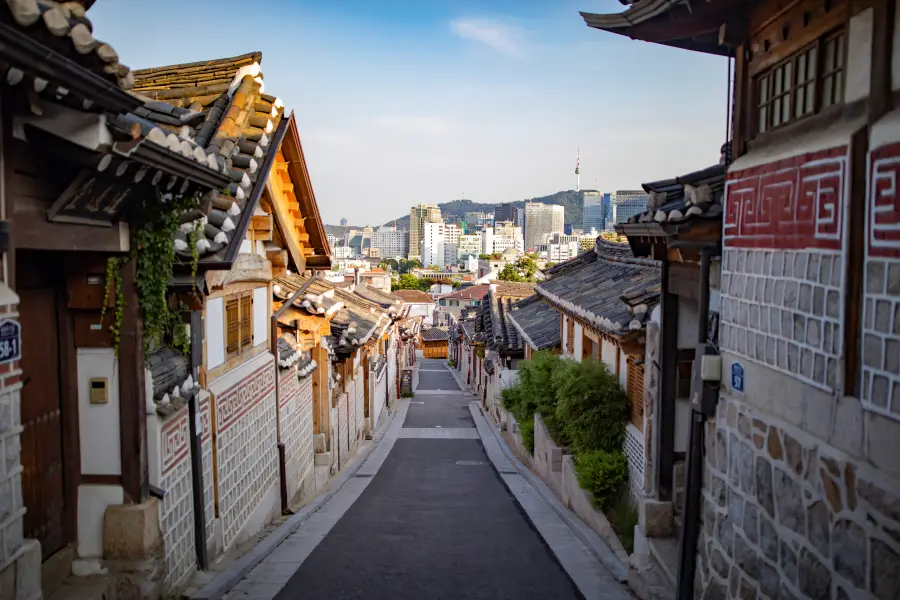

The elegant curved lines of hanok roofs create a striking contrast against the modern cityscape, while the narrow alleyways house everything from traditional crafts to contemporary art, from serene tea ceremonies to vibrant cultural experiences – truly embodying the living essence of Korean culture.
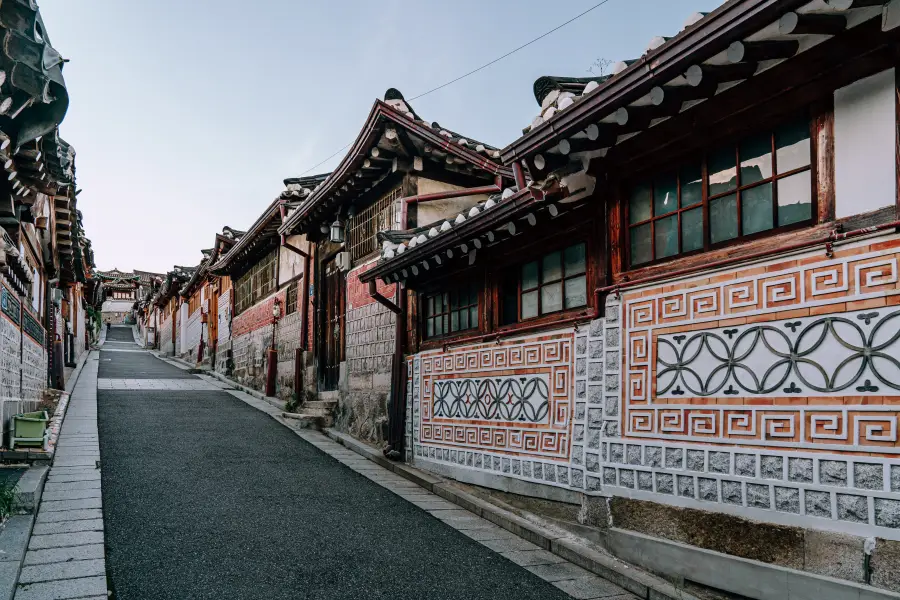
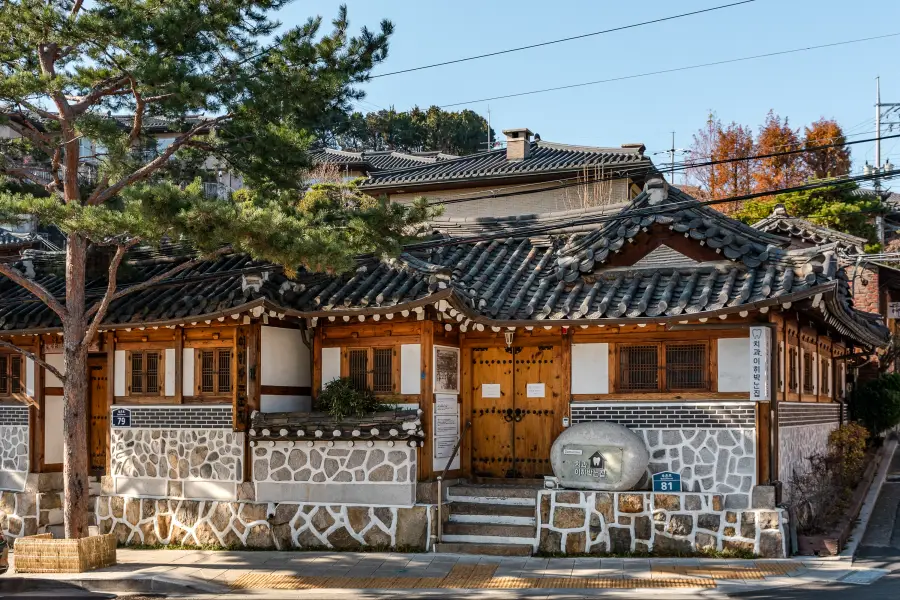
1. Overview
Introduction to
Bukchon Hanok Village
- What It’s Like
- At a Glance
What is Bukchon Hanok Village Like?
Bukchon Hanok Village is Seoul’s largest traditional residential area, preserving 600 traditional Korean houses between two royal palaces (Gyeongbokgung and Changdeokgung). This historic neighborhood serves as a cultural oasis in the heart of the city.

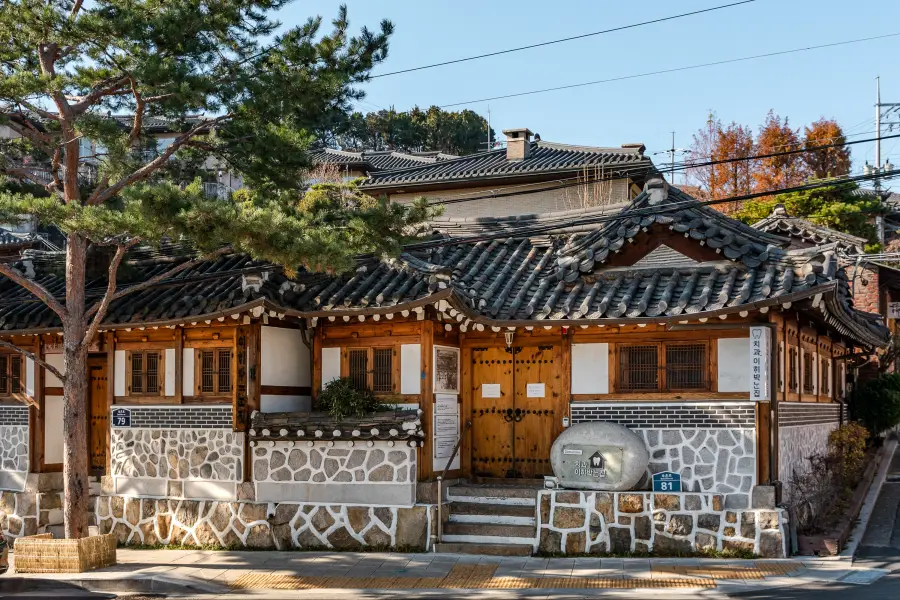
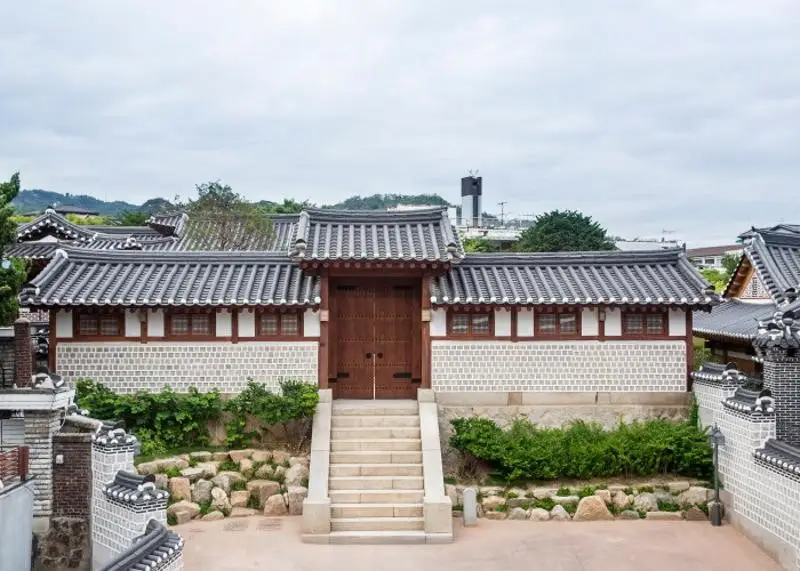
Located in Gahoe-dong and Samcheong-dong districts of Seoul’s Jongno area, Bukchon gets its name from its position “north” of the two royal palaces. During the Joseon Dynasty (1392-1910), it was an exclusive residential area for high-ranking government officials and nobility. Today, it maintains its historic charm so well that it’s often called a “living museum” of Korean traditional culture.
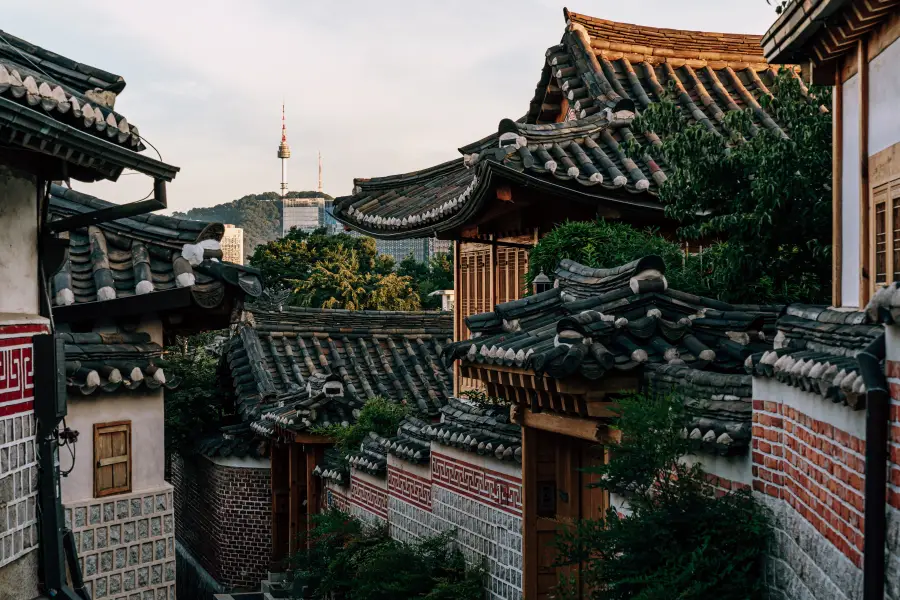
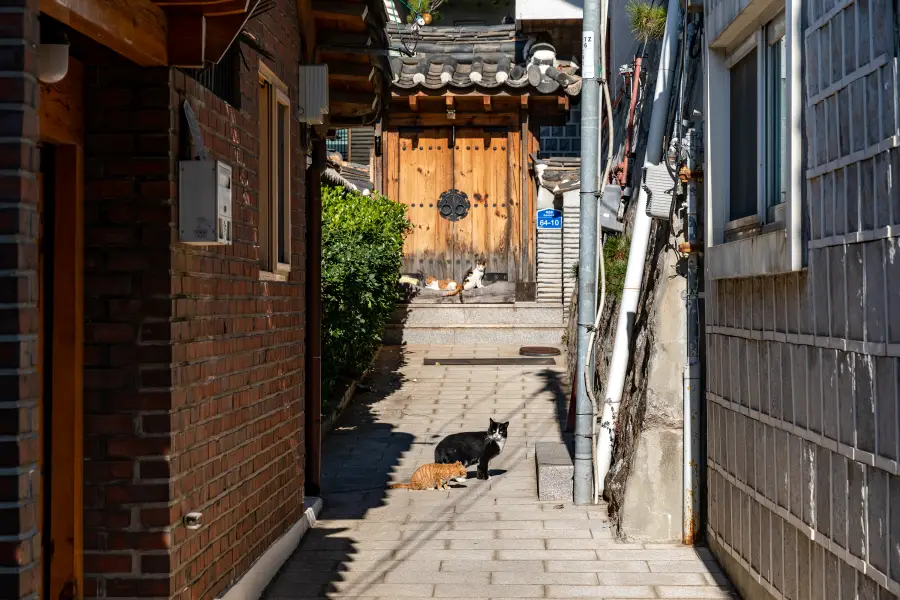
The hanoks built in the 1920s and 1930s showcase the urban adaptation of traditional Korean architecture. Areas like Gahoe-dong 31 and 11 are particularly famous for their beautiful traditional houses. These hanoks brilliantly combine traditional architectural principles with modern living conveniences, creating a unique residential culture where past meets present.
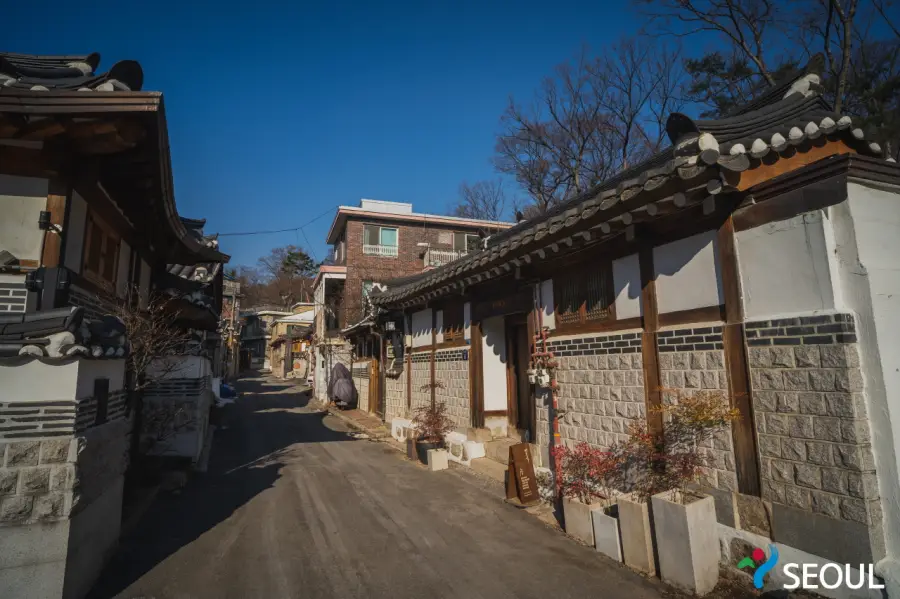
Bukchon’s charm extends beyond its concentration of traditional houses. Narrow stone-walled alleys, gracefully curved roof tiles, and a harmonious blend of traditional and modern cultural spaces create an enchanting atmosphere.

Bukchon-ro 11-gil is especially famous for its picturesque views created by the elegant lines of hanok eaves, making it a favorite spot for photographers seeking the perfect shot.
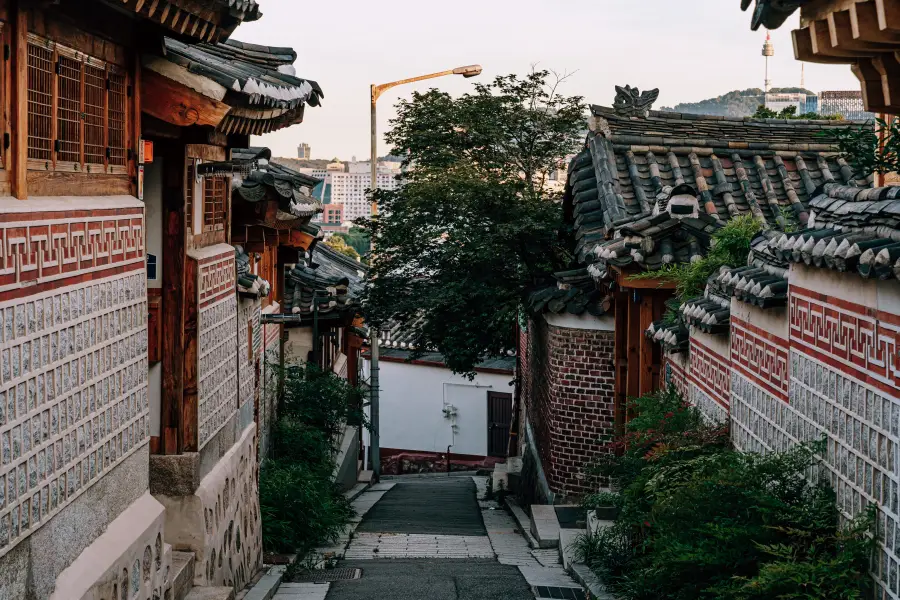
Since the 2000s, Seoul City’s hanok preservation policies have helped maintain Bukchon as both a residential area and a significant tourist destination. The neighborhood has evolved into a living cultural space where visitors can experience Korean traditional culture firsthand through various facilities including traditional craft workshops, cultural centers, museums, galleries, and guesthouses.
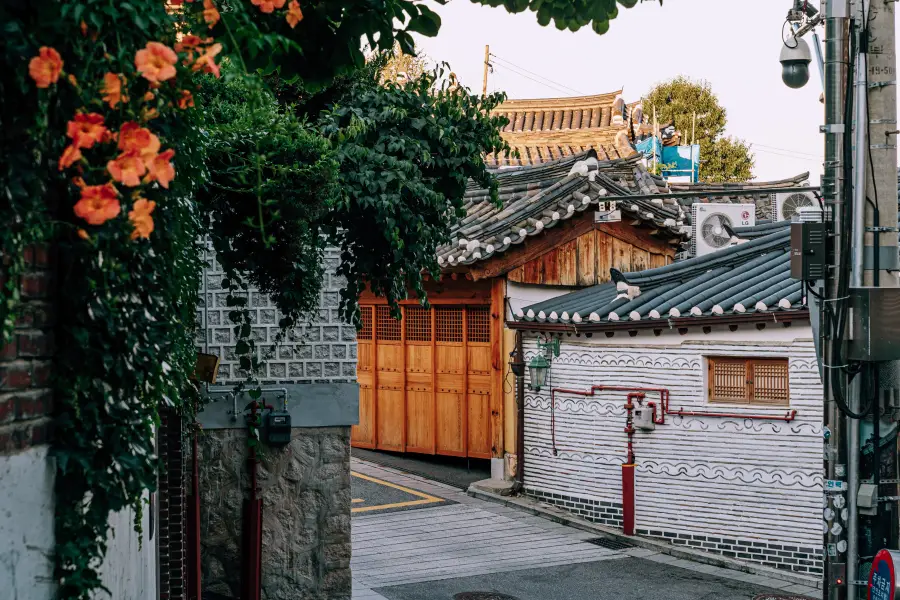
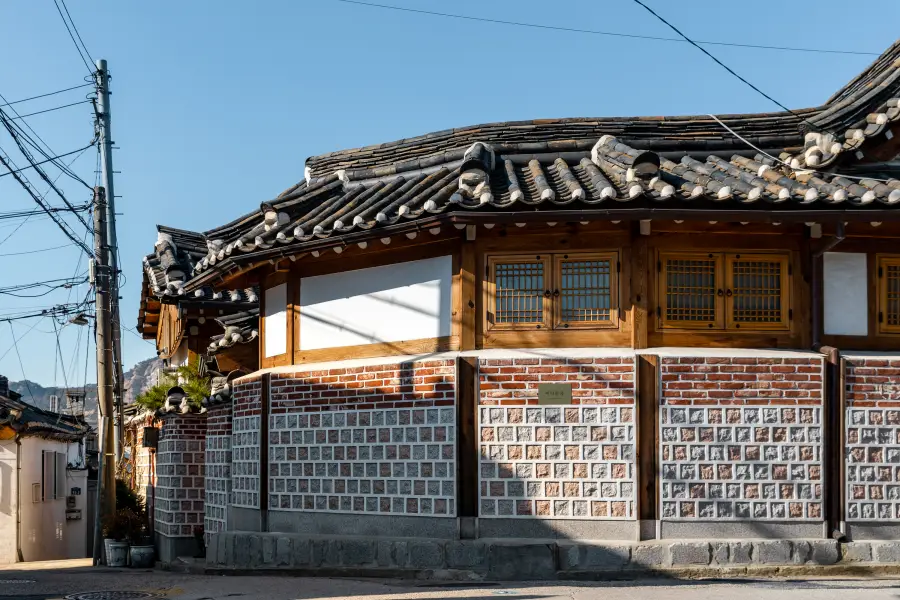
Bukchon Hanok Village at a Glance
Bukchon’s Eight Scenic Spots (Bukchon Palkyong) represent the must-see views in Bukchon Hanok Village.
# First Scenic Spot
View of Chengdeokgung Palace
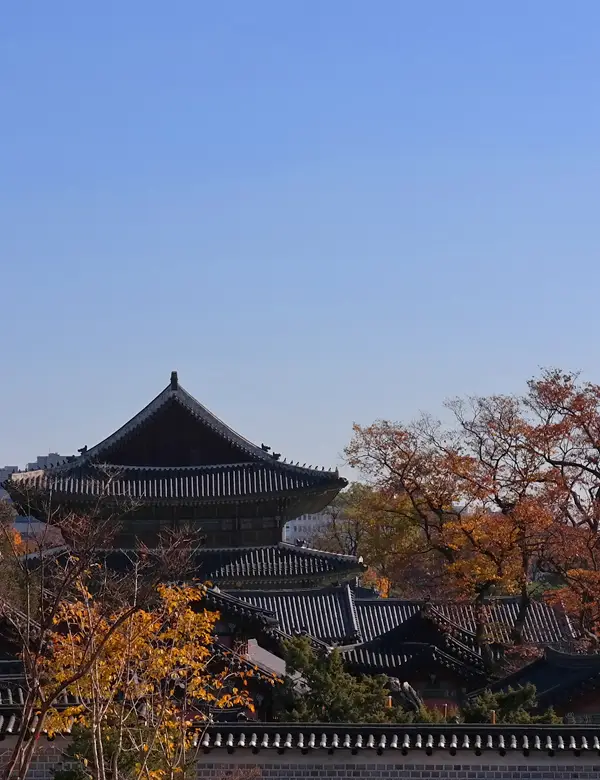
Bukchon-ro 11-gil, with its centuries of history, is the most beautiful hanok street in Bukchon.
The undulating pattern created by varying heights of tiled roofs is breathtaking, and the curved lines of hanok eaves lining both sides of the alley are exquisite.
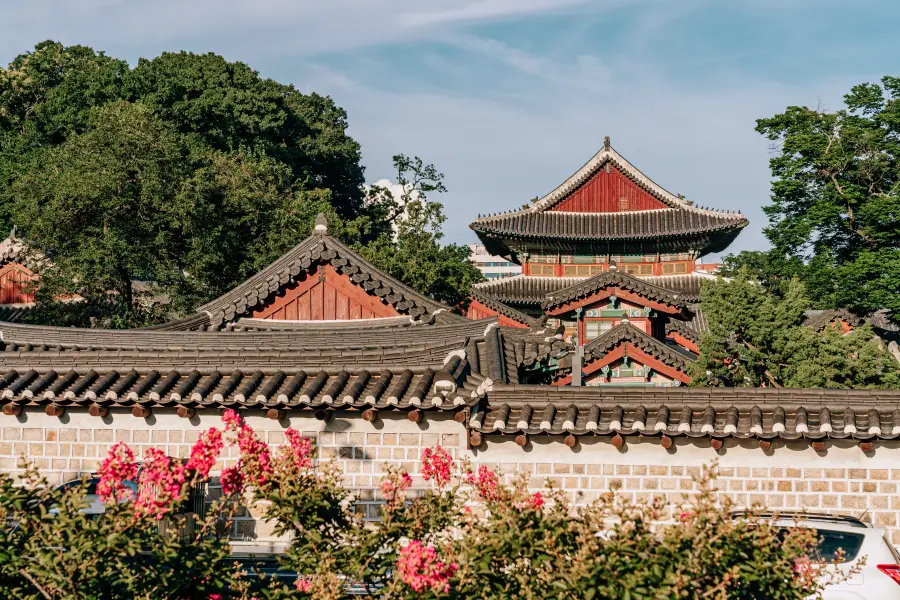
The shadows cast by hanok eaves are particularly atmospheric during morning and evening hours. This location is also famous as a filming site for numerous dramas and movies like “Goblin” and “The Fatal Encounter.”
Click ‘Here‘ to add it to Google Maps.
# Second Scenic Spot
View of Wonseo-dong Handicraft Road
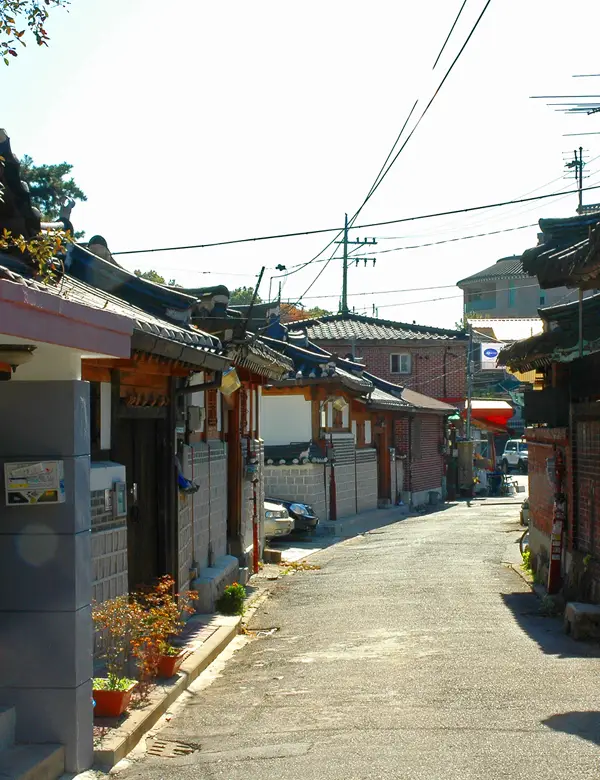
This area best preserves urban hanoks built in the 1930s.
The densely packed hanoks along narrow alleys showcase the residential culture of Seoul’s upper class during that period.
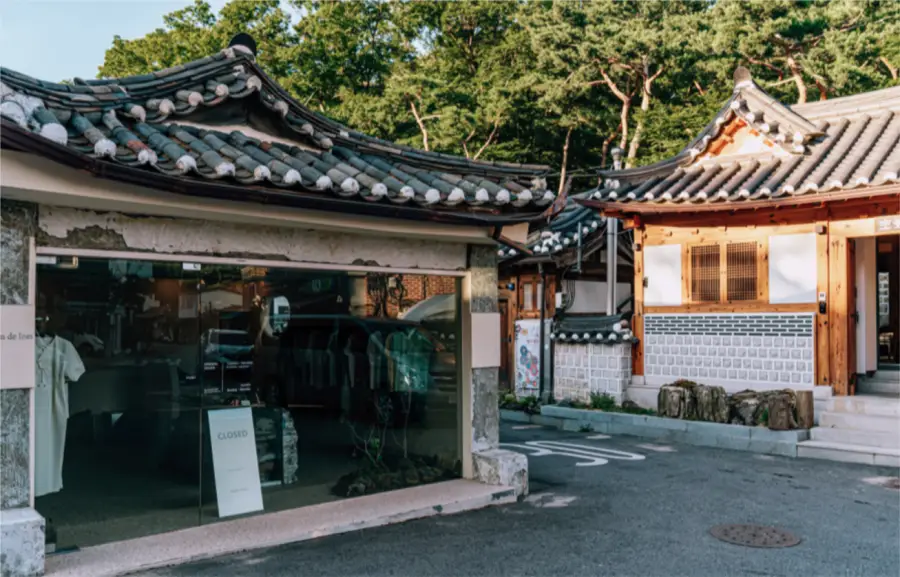
You can observe unique architectural styles that maintain traditional hanok formality while adapting to urban life, particularly beautiful when combined with stone wall paths.
Click ‘Here‘ to add it to Google Maps.
# Third Scenic Spot
View of the Gahoe-dong area

This cultural arts street features modern galleries housed in converted traditional hanoks.
About 20 galleries host various exhibitions bridging traditional and contemporary art.
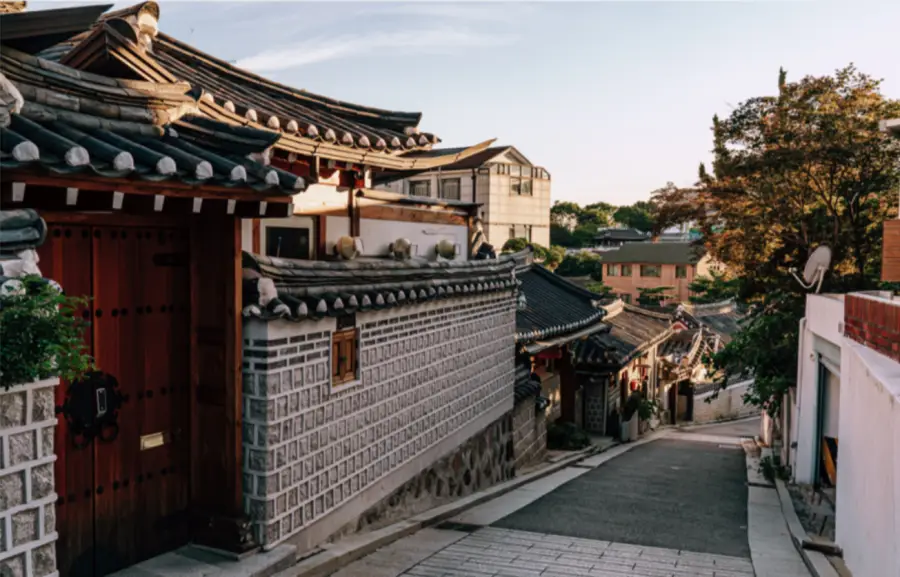
The contrast between traditional hanok exteriors and sophisticated interior exhibition spaces is striking, allowing visitors to appreciate art while strolling through the alleys.
Click ‘Here‘ to add it to Google Maps.
# Fourth Scenic Spot
View from the hill at Gahoe-dong
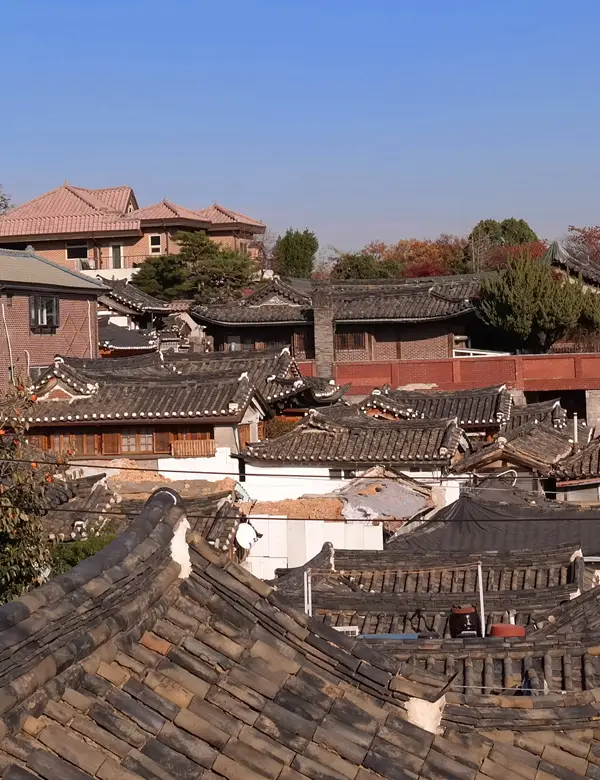
From Samcheong-dong’s hillside road, you can see hanok tiled roofs spreading like waves below.

During sunset, hanok silhouettes against the red sky create a fantastic landscape. This is a favorite spot among photographers.
Click ‘Here‘ to add it to Google Maps.
# Fifth Scenic Spot
View of the road uphill at Gahoe-dong
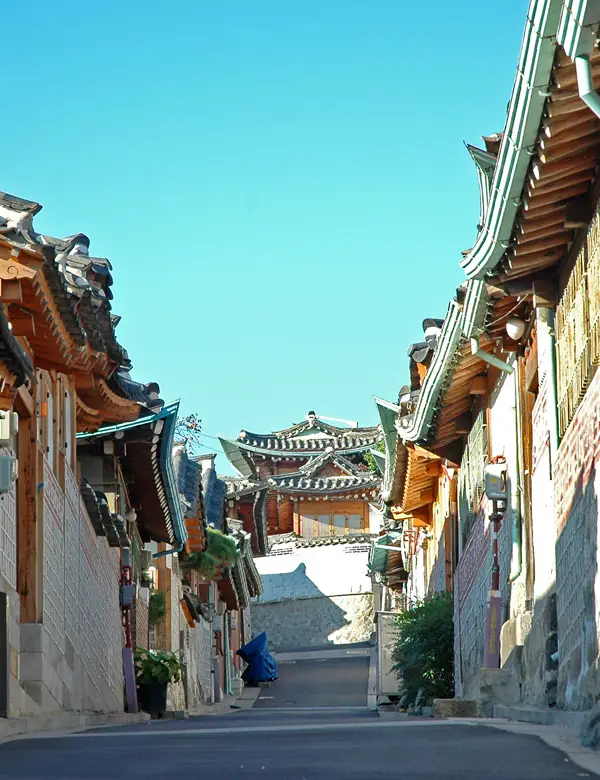
This location offers a single frame capturing both Gyeongbokgung Palace’s majestic buildings and Inwangsan Mountain’s natural ridgeline.
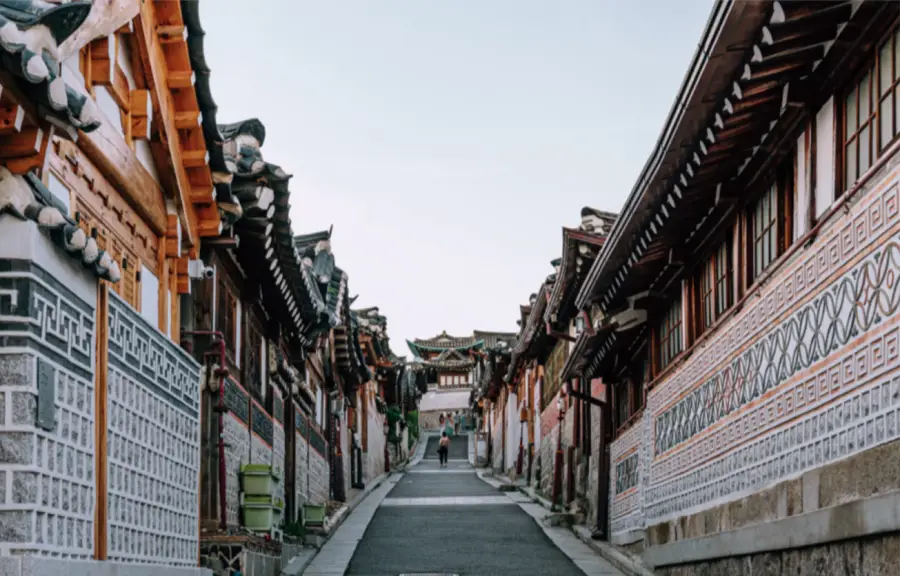
It’s the perfect spot to appreciate Seoul’s unique urban landscape where palace architecture meets mountain scenery.
Click ‘Here‘ to add it to Google Maps.
# Sixth Scenic Spot
View of the road downhill at Gahoe-dong
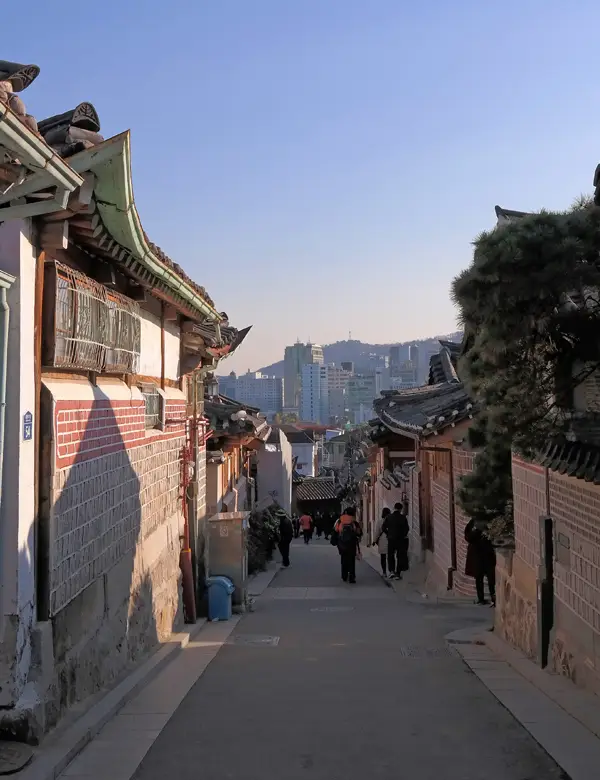
This serene walking path follows the 600-year-old stone walls of Changdeokgung Palace.
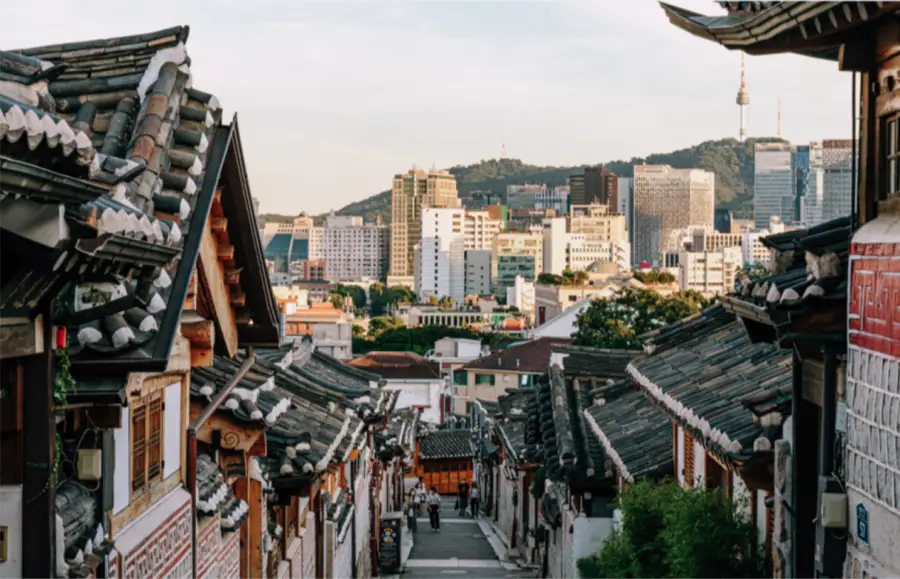
The gently curving path offers different charms each season, particularly romantic in spring when cherry blossoms are in full bloom.
Click ‘Here‘ to add it to Google Maps.
# Seventh Scenic Spot
View at house number (beonji)

A street where tradition harmoniously coexists with modernity.
Modern cafes, restaurants, and select shops are nestled among old hanoks, offering a young, cultural atmosphere.
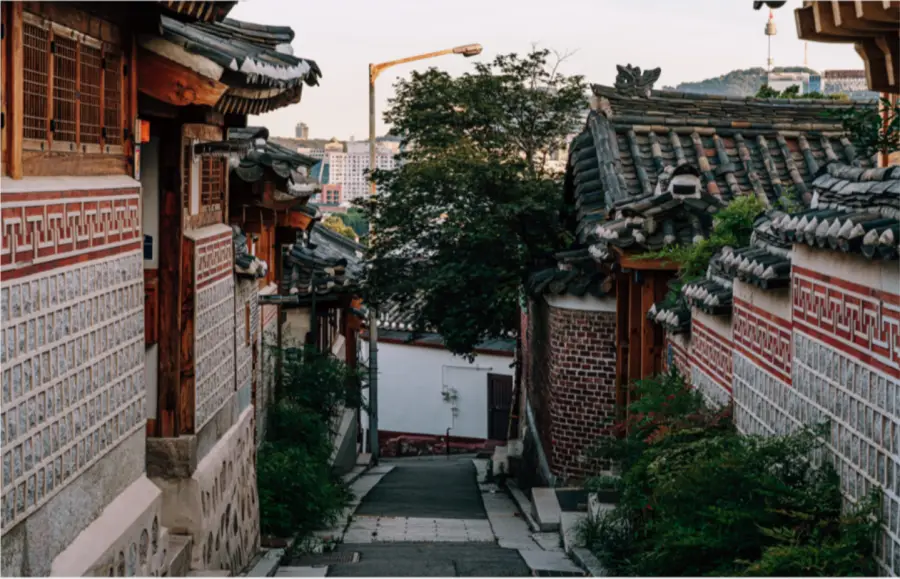
Discover hidden restaurants and unique shops along the winding alleys.
Click ‘Here‘ to add it to Google Maps.
# Eight Scenic Spot
View of the stone stairway at Samcheong-dong
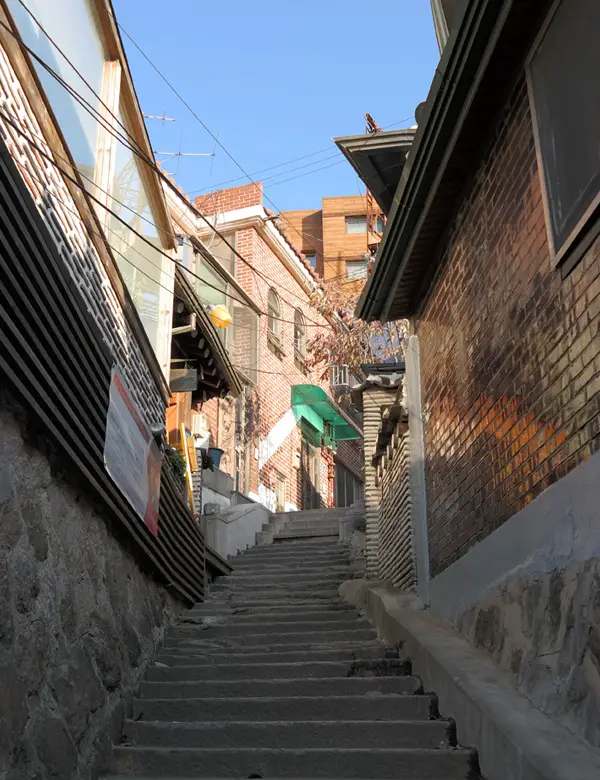
Located at Bukchon’s highest point, this viewpoint offers simultaneous views of the hanok village and modern Seoul’s skyline.
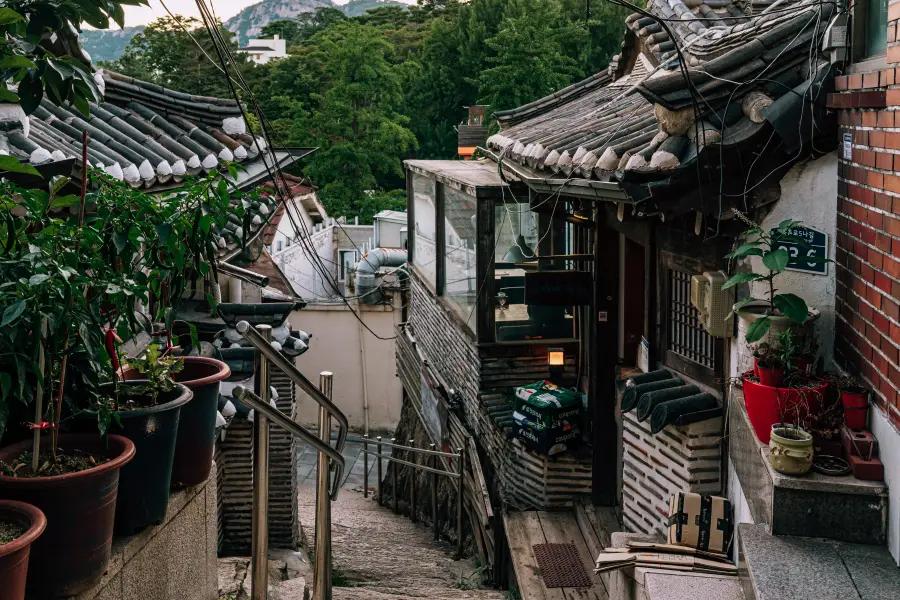
It represents Seoul’s dynamic cityscape, dramatically contrasting traditional and contemporary elements.
Click ‘Here‘ to add it to Google Maps.
Each of these attractions is within a 30-minute to 1-hour walking distance, making it perfect for a day trip to explore them all.
2. Information
Visit Information : Bukchon Hanok Village
- Operating Hours
- How to Get There
Bukchon Hanok Village Operating Hours
| Week Day | Operating Hours |
|---|---|
| Bukchon Cultural Center | 9:00 AM – 18:00 PM (Tuesday-Friday) 9:00 AM – 17:00 PM (Saturday-Sunday) Closed on Mondays |
| Tourist Information Center | 9:00 AM – 18:00 PM |
| Workshops/Galleries | Most open 10:00-18:00 (many closed on Mondays) |
| Cafes/Restaurants | Most open 10:00-22:00 |
Note: As Bukchon Hanok Village is a residential area where people actually live, please refrain from visiting late at night.
Important: Operating hours may vary for individual shops and facilities. Please check before visiting.
How to Get to Bukchon Hanok Village
Click ‘Here‘ to add it to Google Maps.
5 minutes walk from Exit 2 of Anguk Station (Line 3)
7 minutes walk from Exit 1 of Anguk Station (Line 3) toward Bukchon
10 minutes walk from Exit 5 of Gyeongbokgung Station (Line 3)
Get off at Anguk Station/Jaedong Elementary School stop
Village Bus: Jongno 01, Jongno 02
Blue Bus: 151, 171, 172, 272, 601
Green Bus: 7025
From Exit 2 of Anguk Station → Turn right towards Jaedong Elementary School → Enter Bukchon-ro
From Exit 1 of Anguk Station → Head towards Yun Boson House → Enter Bukchon-ro 11-gil
3. Highlight
Things to Do in
Bukchon Hanok Village
- Bukchon’s Alleys
- Perfect Photos in Hanbok
- Bukchon Cultural Center
- Hanok Cafes in the Cafe Alley
- Hanok Guesthouses
- Traditional Craft Workshops
- Bukchon Galleries
- Viewing Seoul’s Panorama
Exploring Bukchon’s Alleys

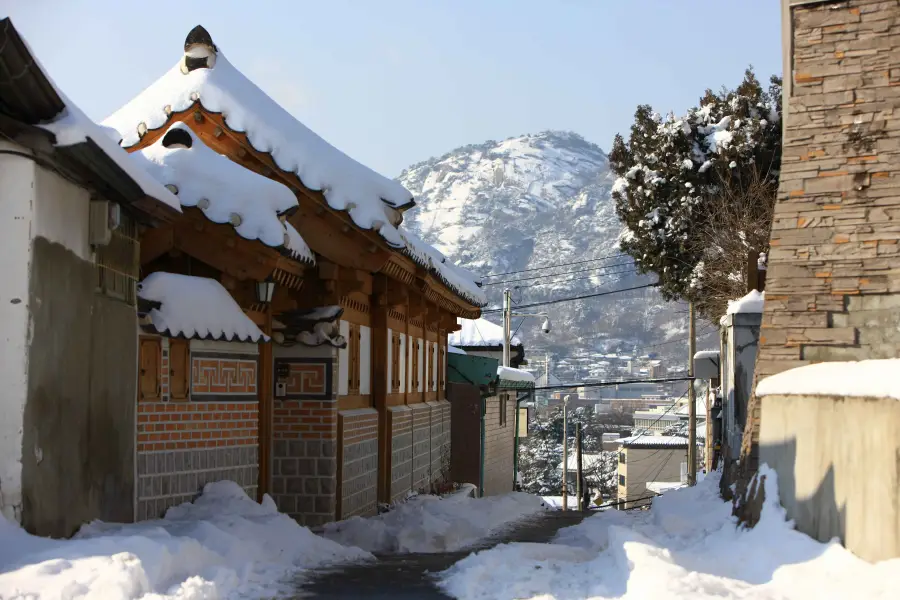
Bukchon’s alleyways create a special atmosphere where time seems to stand still. The narrow paths along stone walls alternate between steep and gentle slopes, offering unexpected views at every turn. The alleys around Gahoe-dong 31 particularly showcase the beauty of traditional hanok architecture.

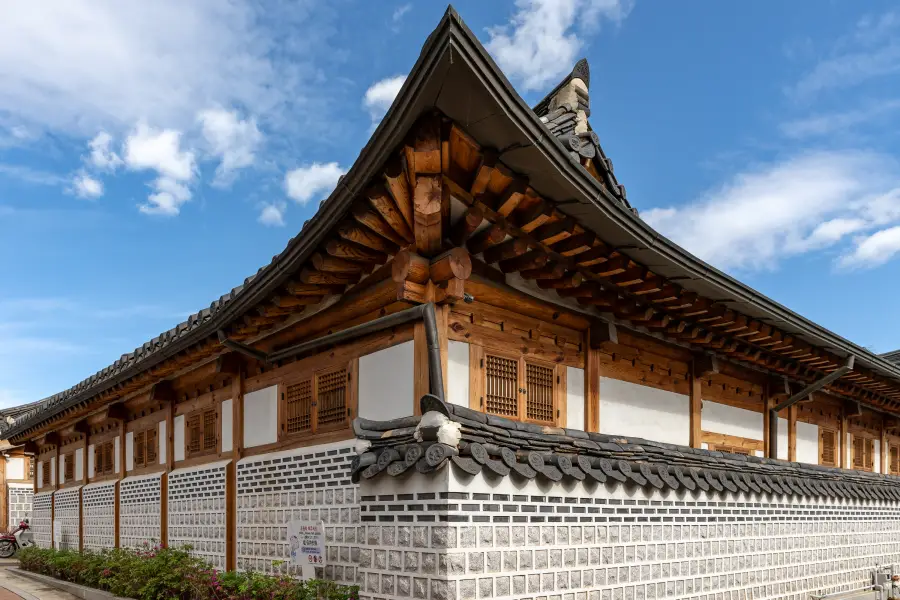
Here, you can admire the playful shadows cast by hanok eaves, while discovering small cafes and workshops hidden in the alleys. Gyedong-gil offers a more modern atmosphere with sophisticated cafes, restaurants, and boutiques that are especially popular among young visitors.

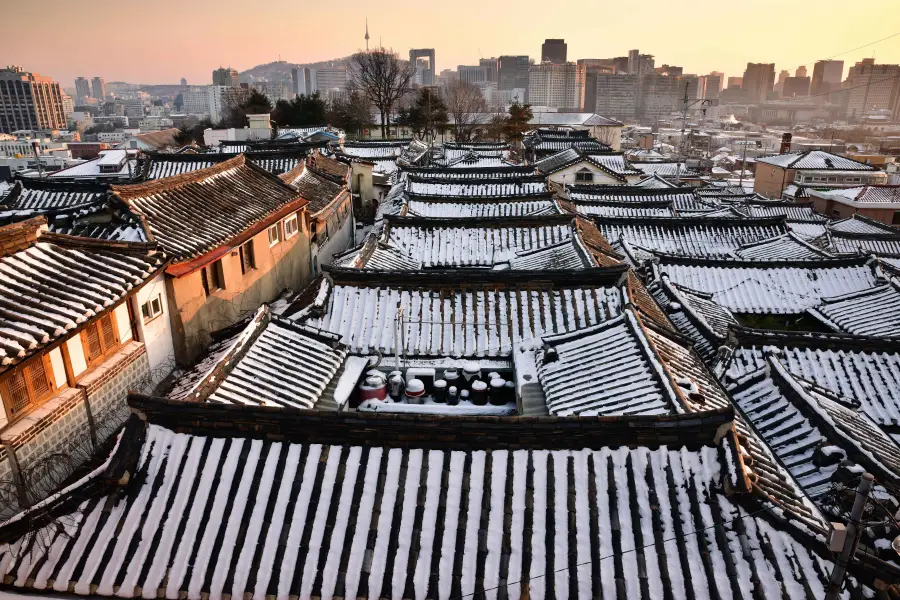
The alleys leading to Samcheong-dong follow a gentle slope and offer various viewpoints of Bukchon, making them popular spots for photography. Early morning or sunset visits allow you to enjoy the peaceful atmosphere while strolling through quiet alleys. Remember that this is a residential area, so please be mindful and respectful of local residents while walking.


Take your time to explore each alley’s unique charm – grab a map and discover Bukchon’s hidden treasures at your own pace.


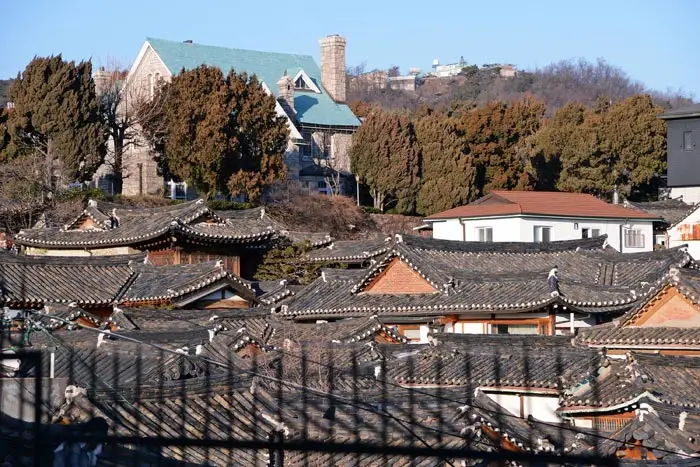
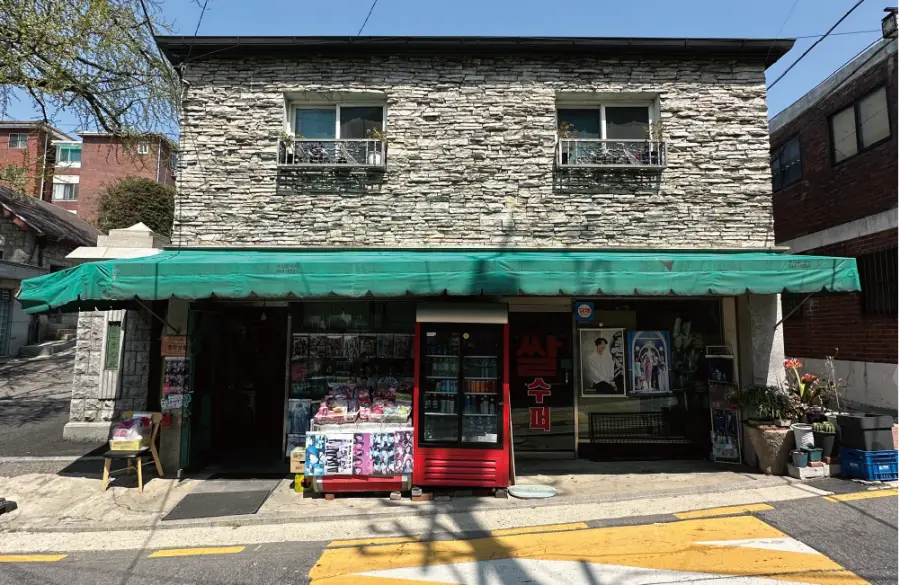
Create Perfect Photos in Hanbok

Bukchon Hanok Village is the ideal location for photos while wearing traditional Korean hanbok against the backdrop of traditional houses. Around Anguk Station and the village entrance, there are about 20 hanbok rental shops where you can easily find hanbok that suits your taste and size.

Most rental shops offer a basic 4-hour rental period, including accessories and hair ornaments. Adding traditional accessories like norigae (decorative hanging ornaments) and flower shoes completes the elegant hanbok styling. Bukchon-ro 11-gil and the Gahoe-dong 31 area are considered the holy grails for hanbok photography.

The stone walls, shadows cast by hanok eaves, and charming narrow alleys enhance the beauty of hanbok in photos. The best lighting for photography is between 10 AM and 4 PM. You can also visit hanok cafes while wearing hanbok to enjoy traditional tea and snacks for an extra special experience.

Making a reservation in advance helps reduce waiting time and increases your chances of getting your preferred hanbok design.
Experiencing Traditional Culture at Bukchon Cultural Center


The Bukchon Cultural Center is a premier destination for experiencing Korean traditional culture firsthand. It offers various weekly traditional culture programs, including hanji (Korean paper) crafts, traditional knot-making, folk painting, and tea ceremonies.

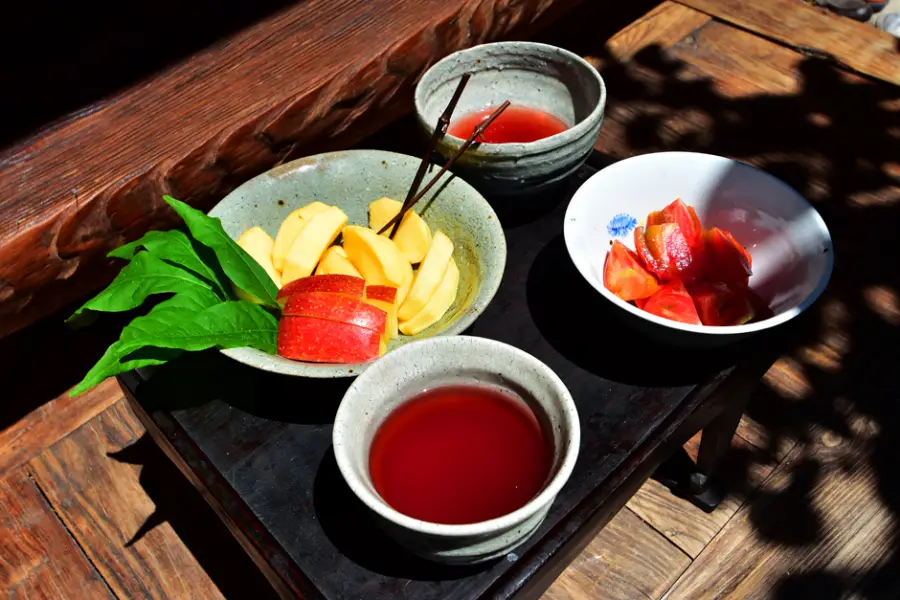
The most popular programs among foreign visitors are Korean calligraphy and traditional snack-making. These experiences offer great opportunities to understand Korean culture deeply by practicing brush calligraphy and making seasonal traditional snacks.
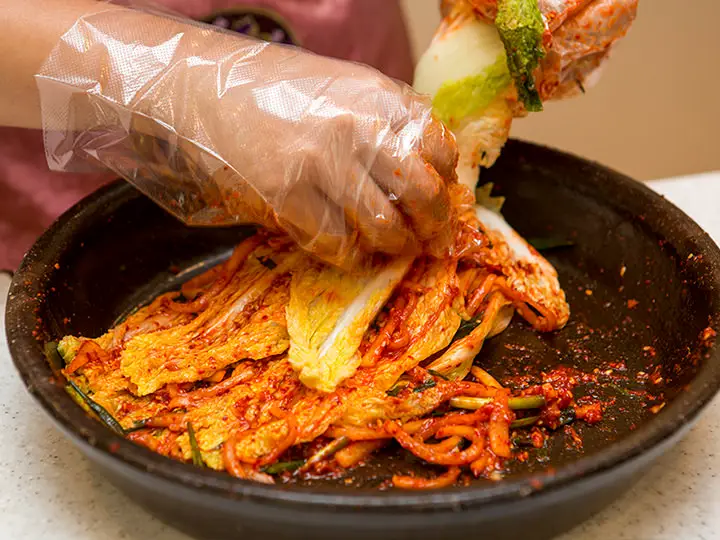
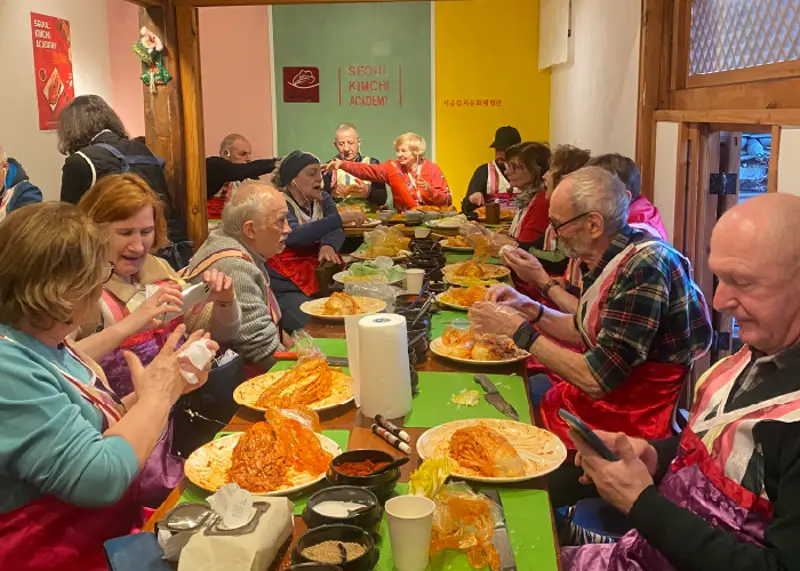
Programs typically last 1-2 hours, with friendly professional instructors guiding beginners through each step. You can take home your completed works as special souvenirs. The center itself is housed in a renovated hanok, adding to the authentic traditional atmosphere.
Advance reservations are required, and weekend slots should be booked at least a week ahead due to high demand.


Bukchon Cultural Center
37 Gyedong-gil, Jongno-gu, Seoul
Tel: +82-2-741-1033
Enjoying Hanok Cafes in the Cafe Alley
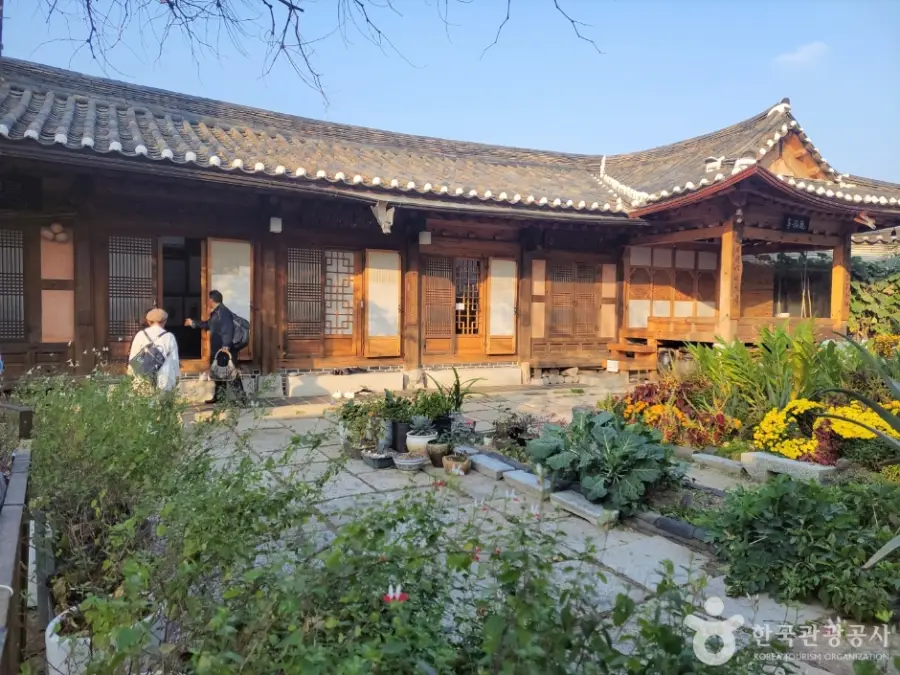

Bukchon’s hanok cafes perfectly blend traditional architecture with modern cafe culture. About 20 hanok cafes are located along Samcheong-dong and Gyedong-gil, each with its unique charm.
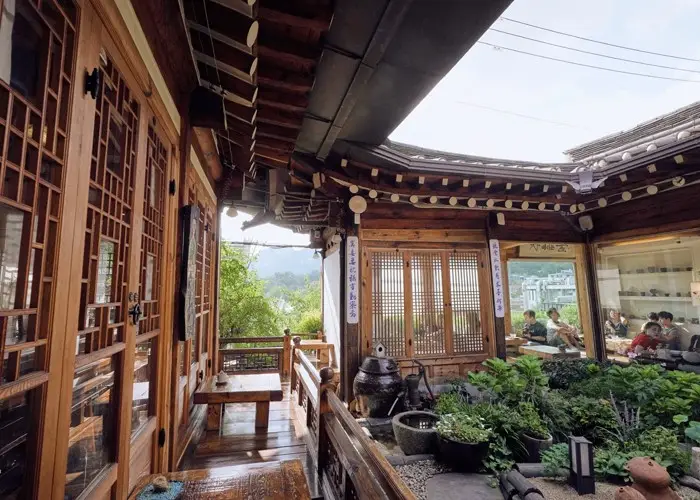
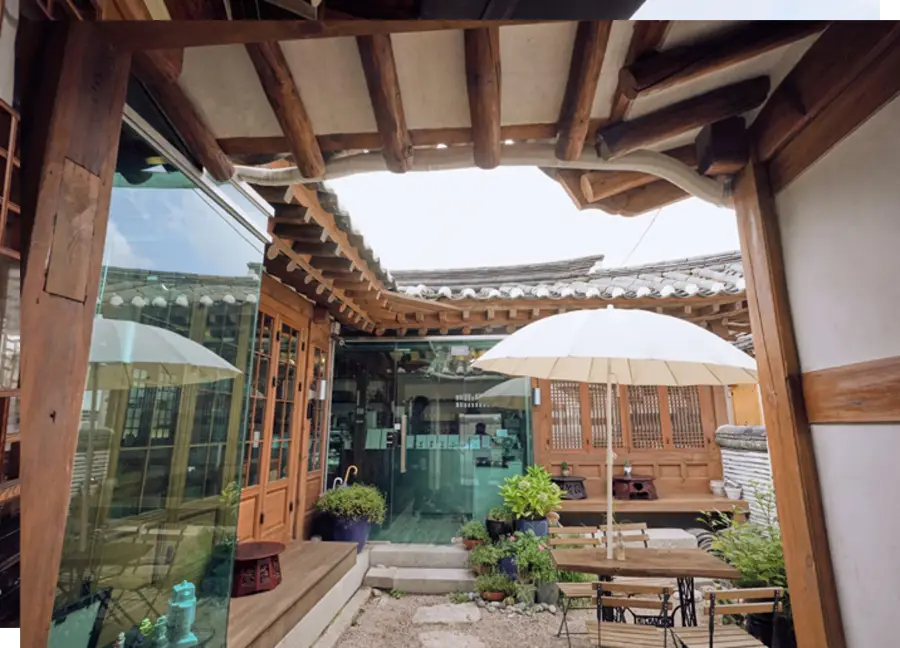
Traditional tea cafes offer seasonal Korean teas and handmade snacks, where you can sit on the wooden floor and enjoy the courtyard view. Modern-style cafes maintain the hanok structure while incorporating contemporary interior design for a unique atmosphere.
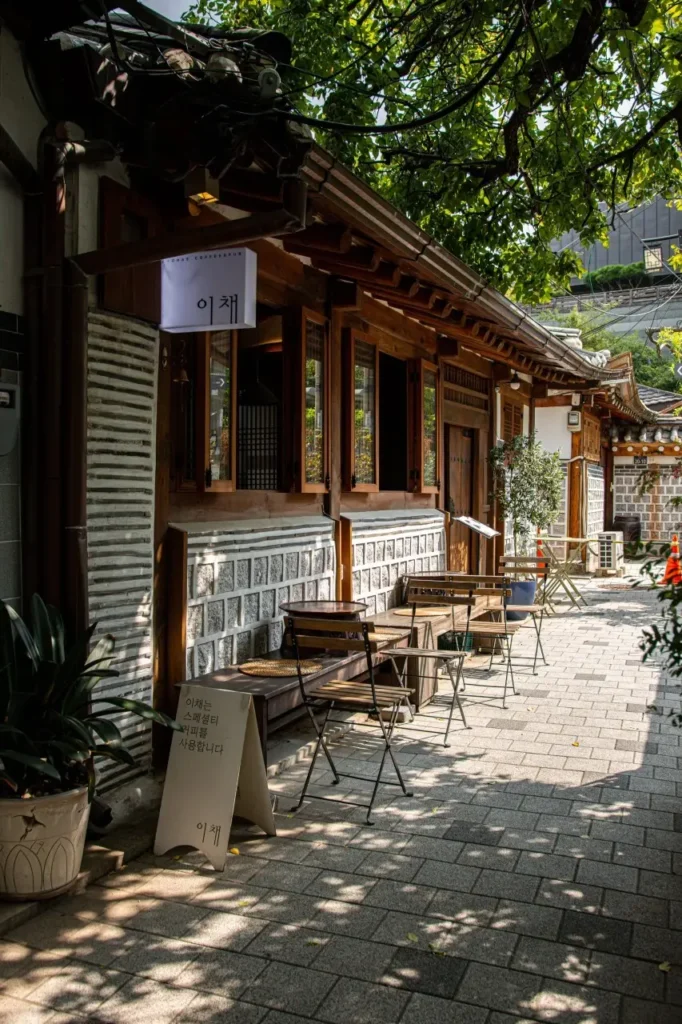
Sitting on terraces under the eaves or in courtyards allows you to experience seasonal changes while relaxing. Most cafes open from 10 AM, with weekend afternoons often having waiting times. For a quieter experience, visit on weekday mornings or evenings.
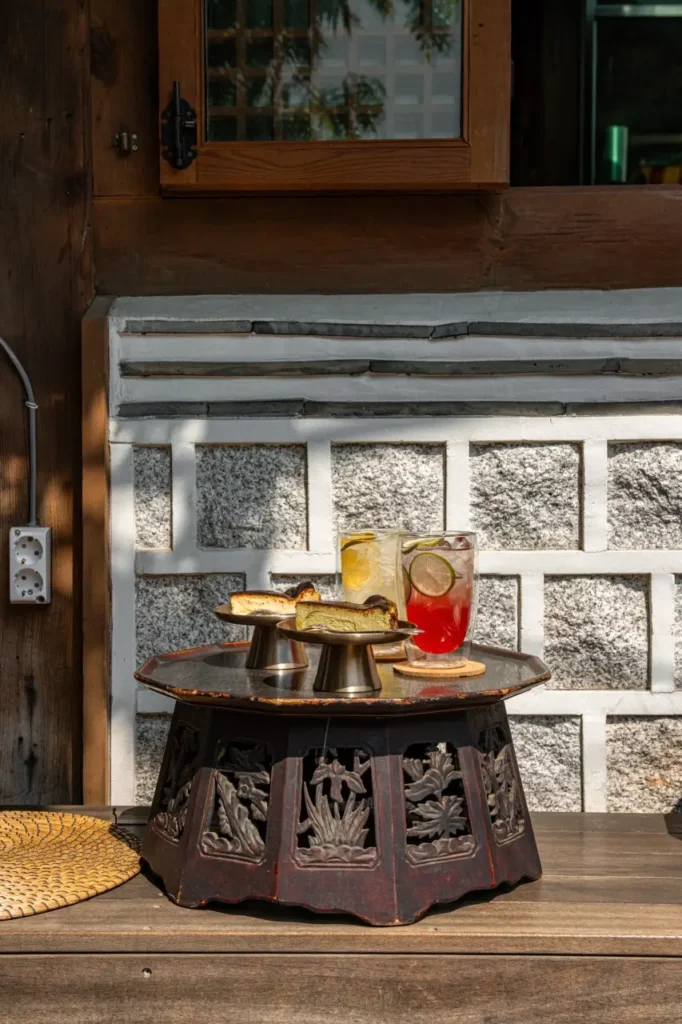
Staying at Hanok Guesthouses


Hanok guesthouses in Bukchon offer a unique opportunity to spend the night in a traditional Korean house. Most maintain traditional architecture while providing modern amenities for a comfortable stay.


Spending a night in a traditional ondol room (heated floor) offers a special experience of stepping back in time. Wake up to bird songs in the hanok courtyard and enjoy morning tea under the eaves. Most guesthouses serve traditional Korean breakfast.

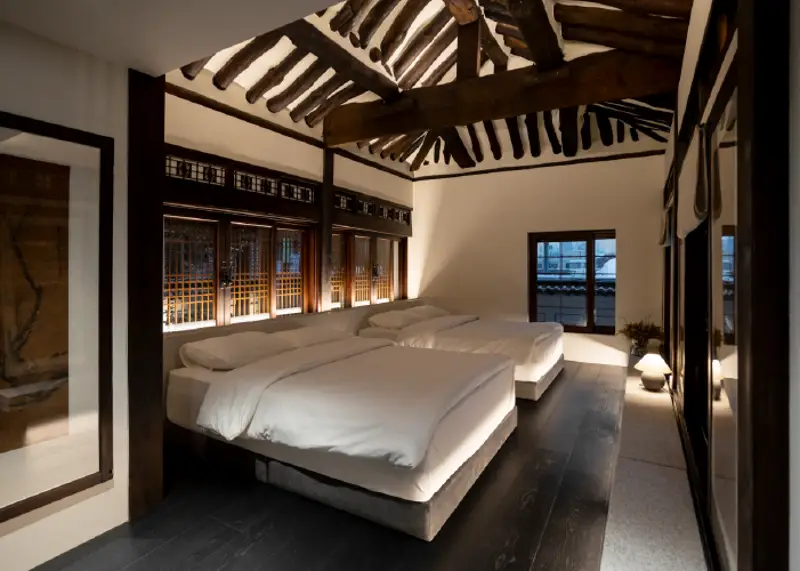
The soft evening lighting creates a different atmosphere from daytime. These small-scale guesthouses offer quiet, private relaxation and helpful local guidance from the hosts.


Here’s a list of recommended Hanok Cafes to visit in Bukchon Hanok Village.
MIRROROOM
Mirror Hanok Mirror Room is a stylish café that blends traditional hanok aesthetics with unique mirror decor. Inspired by ‘Alice in Wonderland,’ it offers a whimsical atmosphere where guests can enjoy premium omija tea and desserts.
LOWROOF
Low Roof is a café located in Bukchon Hanok Village, harmoniously blending traditional hanok architecture with modern design. It offers a variety of desserts, including financiers and pound cakes, along with unique beverages like jasmine sujeonggwa. The interior features large windows that provide scenic views of Bukchon, making it an ideal place to relax.
E-Chae Cafe
E-Chae Cafe is a hanok-style café located in Bukchon Hanok Village, known for its serene atmosphere and spacious courtyard. They offer specialty coffee brewed from select beans and beverages made with homemade fruit syrups. The café features various seating options, including private rooms and outdoor areas.
Exploring Traditional Craft Workshops
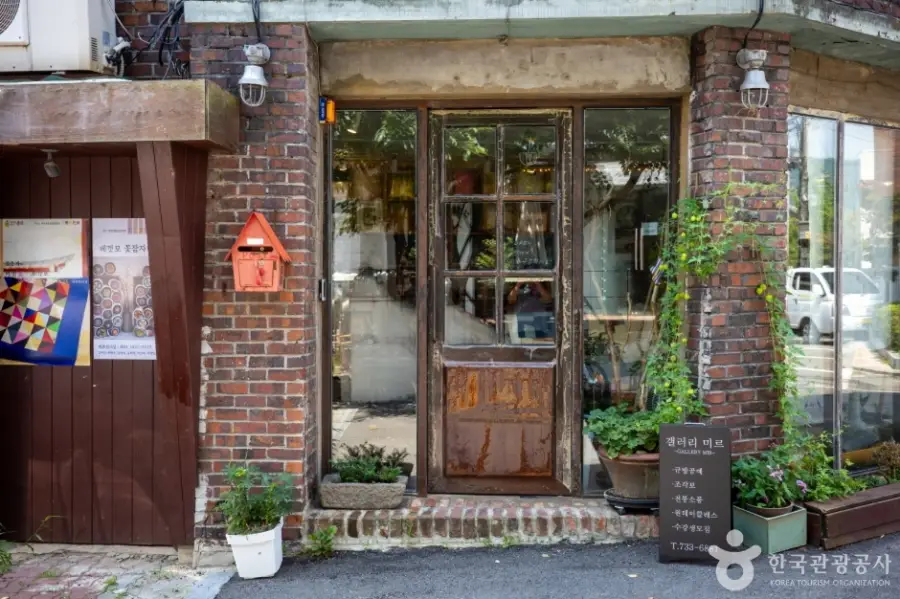
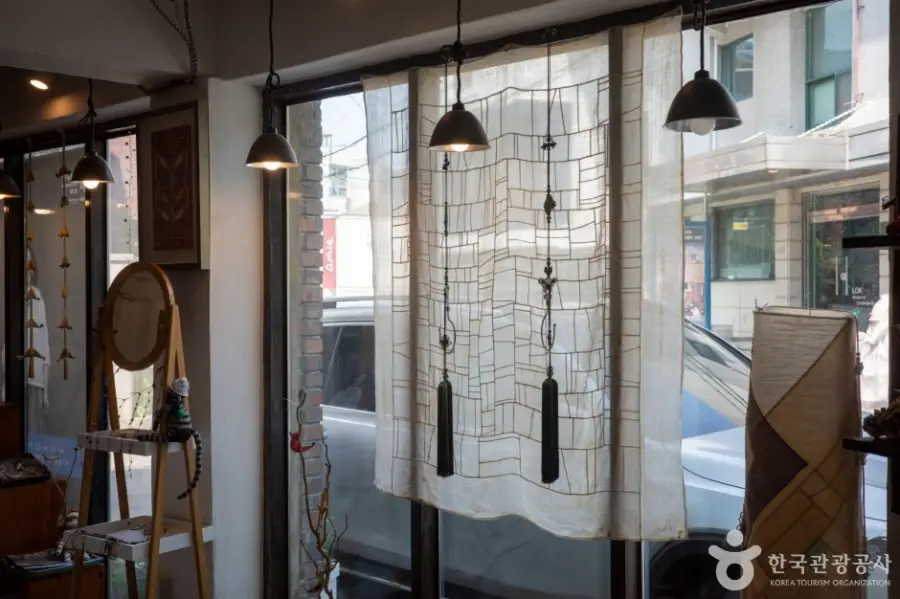
Throughout Bukchon, artisans maintain workshops preserving traditional crafts. These workshops, specializing in metalwork, pottery, hanji, mother-of-pearl inlay, and woodwork, allow visitors to observe craftsmen at work and purchase completed pieces.



Workshops concentrated in Gahoe-dong and Wonseo-dong showcase contemporary pieces made using traditional techniques. Metal craft workshops offer traditional jewelry and household items, while pottery workshops display modern-style ceramic works.


Some workshops offer hands-on experiences through advance reservations. Each workshop has its unique artistic style, making browsing enjoyable, and you can purchase one-of-a-kind handcrafted souvenirs.


Here’s a list of recommended Craft Workshops to visit in Bukchon Hanok Village.
NR Ceramics
NR Ceramics is a ceramic brand founded by artist Lee Nuri in 2018, aiming to create designs that naturally blend into spaces and evoke artistic sensibilities in daily life. Their handcrafted pieces feature soft curves and delicate details, enhancing every moment with a touch of uniqueness.
Pearl shell Bukchon
Jagae Iyagi Jinju Shell is a mother-of-pearl craft brand with a three-generation legacy, located in Bukchon Hanok Village. Here, you can find various nacre crafts, such as Najeonchilgi jewelry boxes and hand mirrors, and participate in hands-on mother-of-pearl craft programs. Experience Korea’s beautiful craft culture in a space where tradition and modernity harmonize.
ONDO
ONDO is a ceramic studio located in Bukchon Hanok Village, crafting handmade pottery with warm tones and simple lines. They offer regular and one-day pottery classes each month, allowing participants to create tableware and everyday objects while experiencing the cozy lifestyle of a hanok.
Appreciating Art at Bukchon Galleries

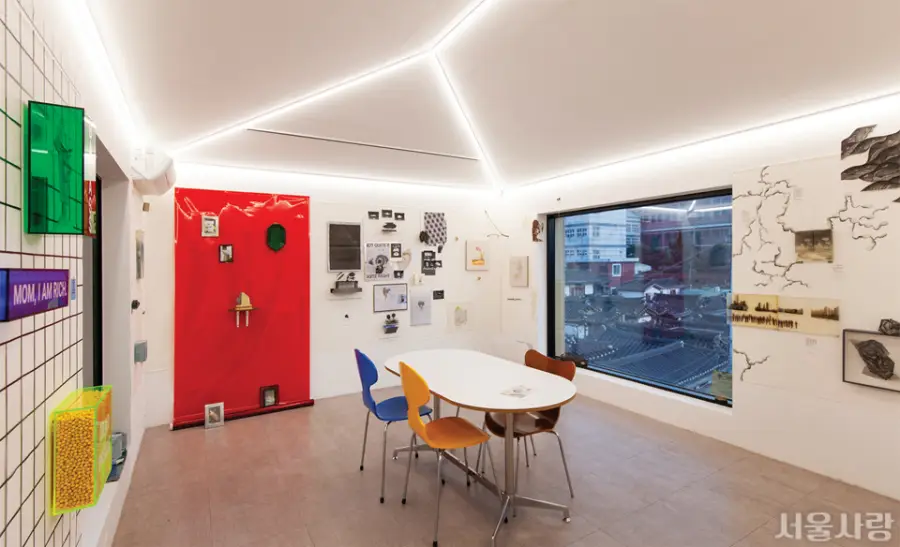
Bukchon houses around 30 galleries showcasing art that bridges tradition and modernity. The gallery alley in Wonseo-dong, filled with contemporary art galleries, feels like walking through a small museum district.
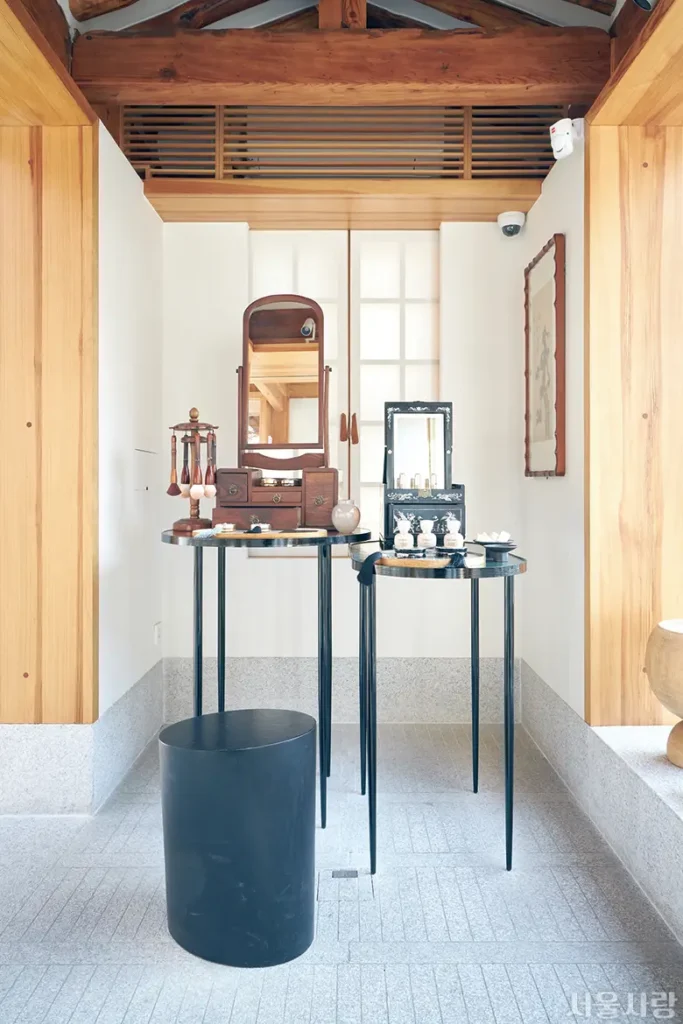
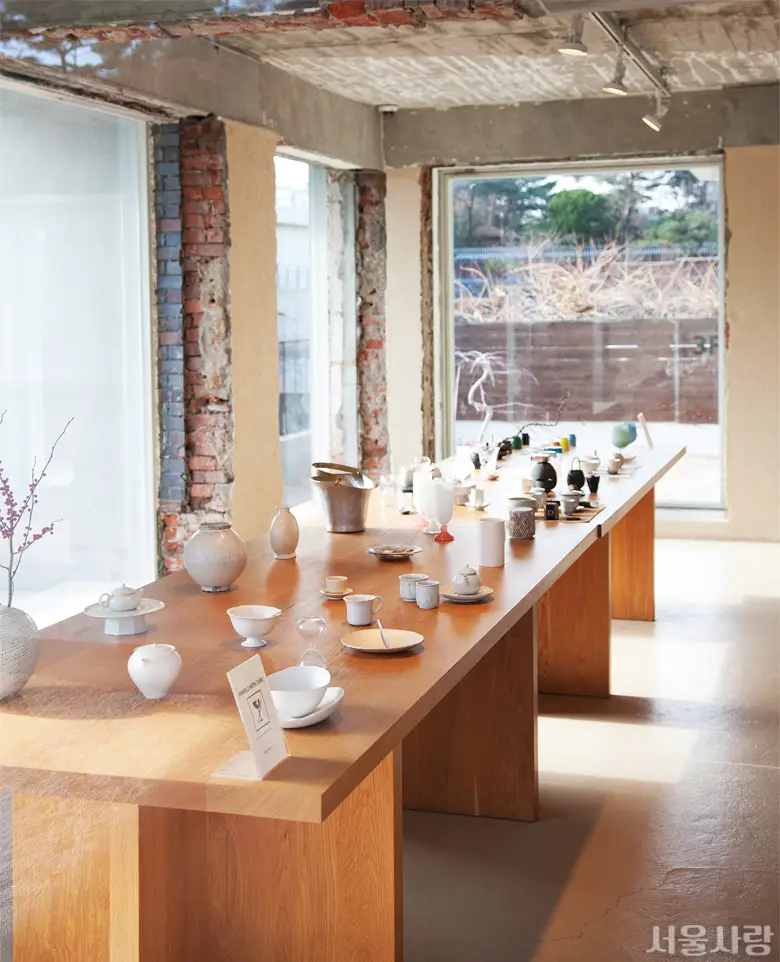
Galleries housed in converted hanok are artworks themselves, offering a unique setting for viewing contemporary art. Exhibitions typically change every 2-3 weeks, featuring works from emerging to established artists.
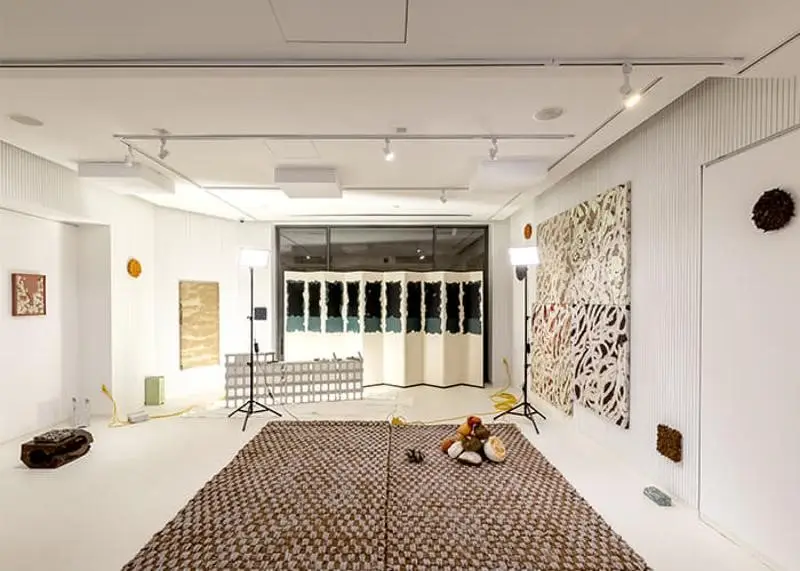

Most galleries offer free admission, making art appreciation easily accessible. Each gallery’s unique curation and space design makes them perfect stops during your Bukchon walk.
Here’s a list of recommended Galleries to visit in Bukchon Hanok Village.
Gallery MHK
Gallery MHK, located in Samcheong-dong, Jongno-gu, Seoul, is a contemporary art gallery showcasing works by various domestic and international artists. Every February, it hosts the ‘WHITE WALL’ art bazaar, featuring a diverse range of artworks. Additionally, the gallery offers a rental program called ‘Space Time’ for exhibitions, photo shoots, pop-ups, and other events.
Hakgojae
Hakgojae is a gallery located on Samcheong-ro in Jongno-gu, Seoul, established in 1988. The name embodies the philosophy of ‘learning from the old to create new,’ showcasing works that reinterpret traditional philosophy and spirit through the language of contemporary art. Every February, it hosts the ‘WHITE WALL’ art bazaar, featuring a diverse range of artists’ works. Additionally, the gallery offers a rental program called ‘Space Time’ for exhibitions, photo shoots, pop-ups, and other events.
Chungm Art Company
Chung.M Art Company, located on Bukchon-ro in Jongno-gu, Seoul, is a gallery that focuses on planning diverse exhibitions centered around domestic artists, aiming for harmony with artistic interiors. Beyond exhibition planning, they engage in artist management, discovery of emerging artists, international exchange exhibitions, and art collaborations with companies. Through these efforts, they present innovative cultural arts that communicate easily with the public.
Viewing Seoul’s Panorama from Bukchon Observatory

The viewpoints at Bukchon’s higher elevations offer special spots to take in Seoul’s past and present. From the hill behind the Board of Audit and Inspection in Gahoe-dong, you can see Gyeongbokgung Palace and Gwanghwamun area, while Samcheong-dong’s uphill road offers views of traditional roof tiles against Seoul’s modern skyline.


The views are most beautiful at sunset when the sky turns red, complementing the tiled roofs. Each season adds its charm – cherry blossoms in spring and autumn leaves in fall. Benches near the viewpoints provide rest spots and photo opportunities.

On clear days, you can see all the way to Bukhansan Mountain in Seoul’s panorama.

Click ‘Here‘ to add it to Google Maps.
Insider Tips for
Bukchon Hanok Village Like a Local
- Best Photo Spots
- Guided Tours
- Visitor Etiquette
- Avoiding Crowds
Best Photo Spots and Optimal Photography Times
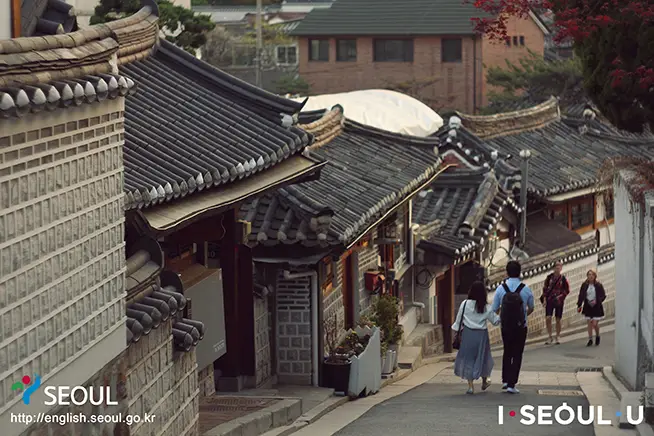
Bukchon-ro 11-gil is undoubtedly the most popular photography spot in Bukchon Hanok Village. This location perfectly captures traditional Korean beauty with its curved hanok rooflines and stone wall paths.
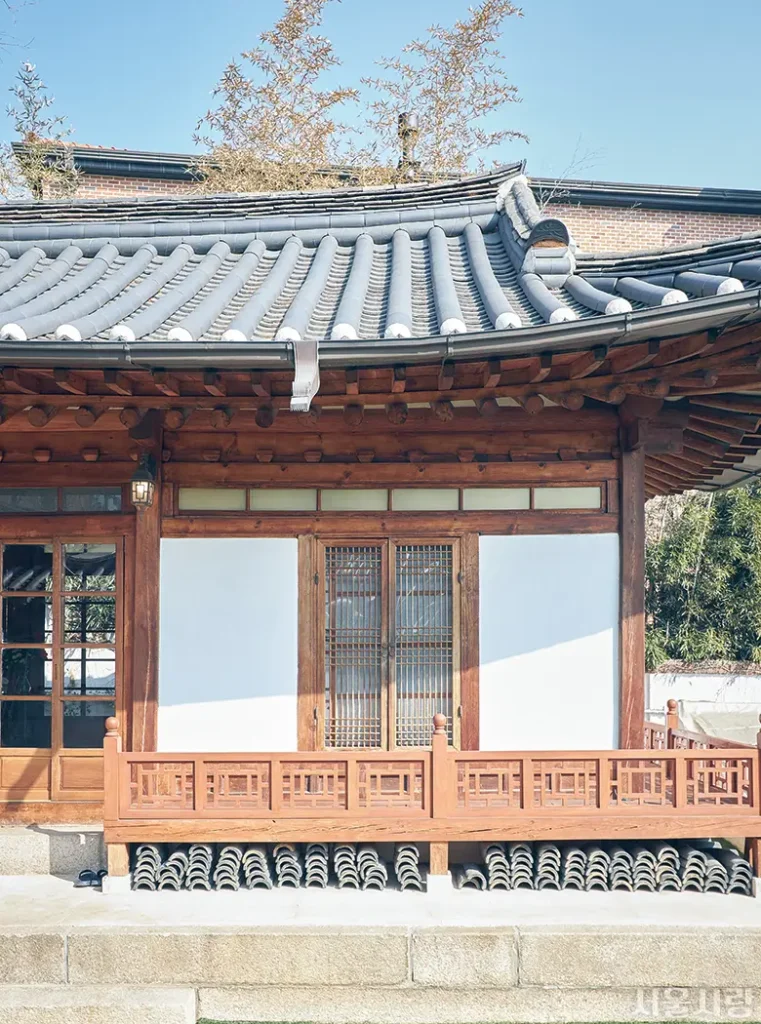
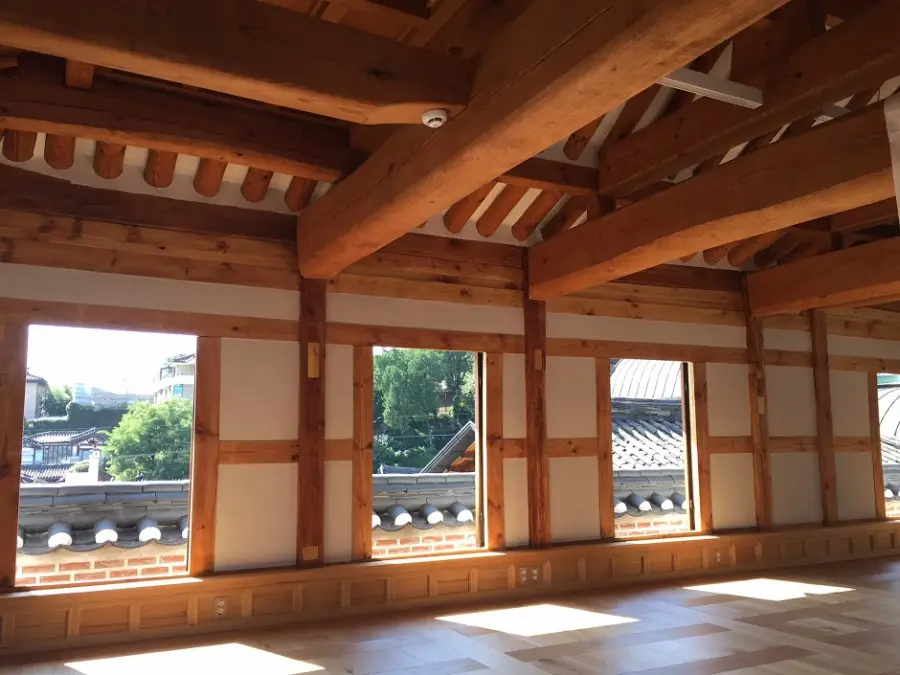

The golden hour for photography is between 9-11 AM, when sunlight creates beautiful shadows on hanok eaves and there are fewer tourists. Another popular photo zone is the Gahoe-dong 31 area, which is most photogenic between 3-5 PM when bathed in afternoon sunlight.

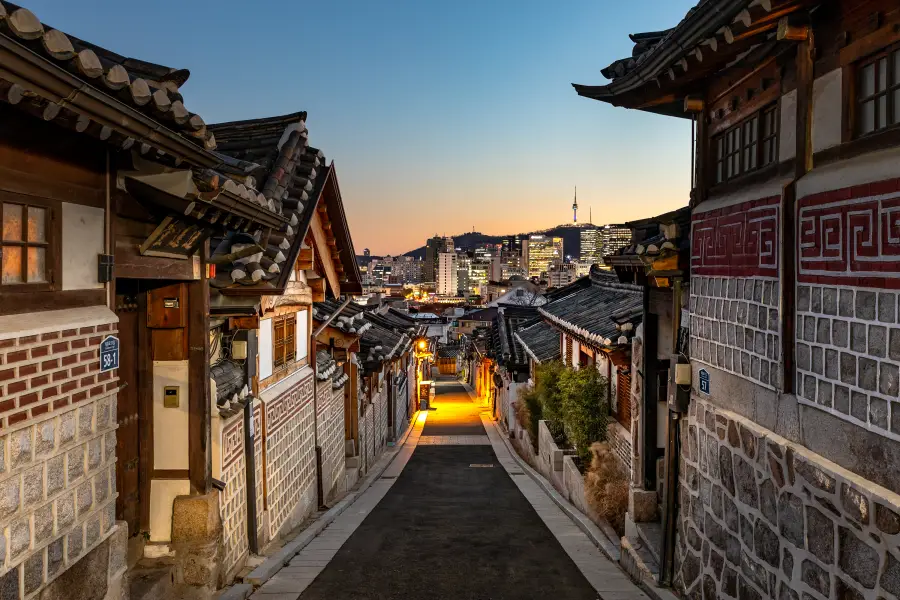
Don’t miss the viewpoint from Samcheong-dong hill, especially at sunset when the tiled roofs silhouette against the crimson sky.
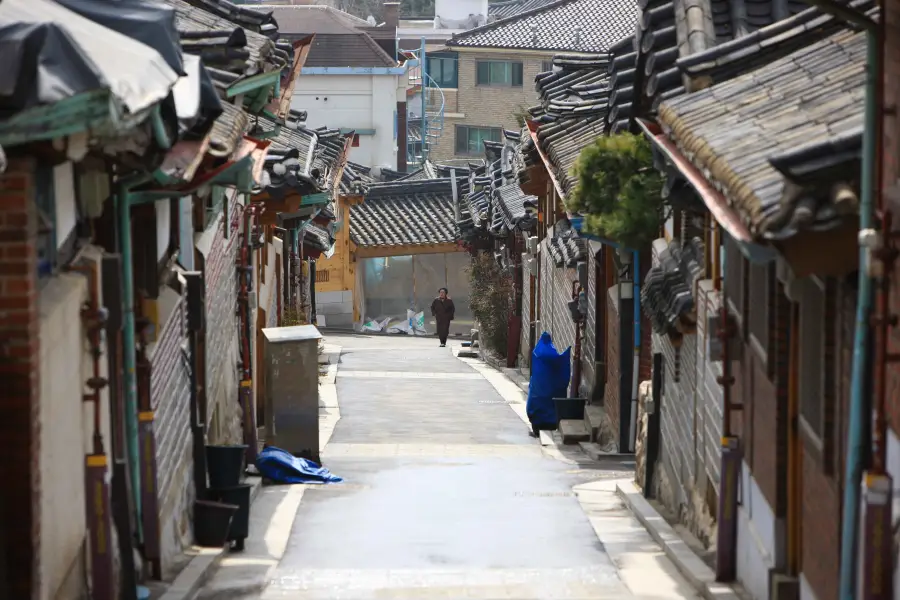
Note: Respect residents’ privacy by avoiding photos of house interiors or through windows. Tripod use may be restricted in certain areas.
Guided Tours of Bukchon

The free guided tours operated by Bukchon Cultural Center offer the best way to discover Bukchon’s hidden stories. Professional guides lead 40-minute tours Tuesday through Sunday, with two daily sessions at 1:30 PM and 3:00 PM.
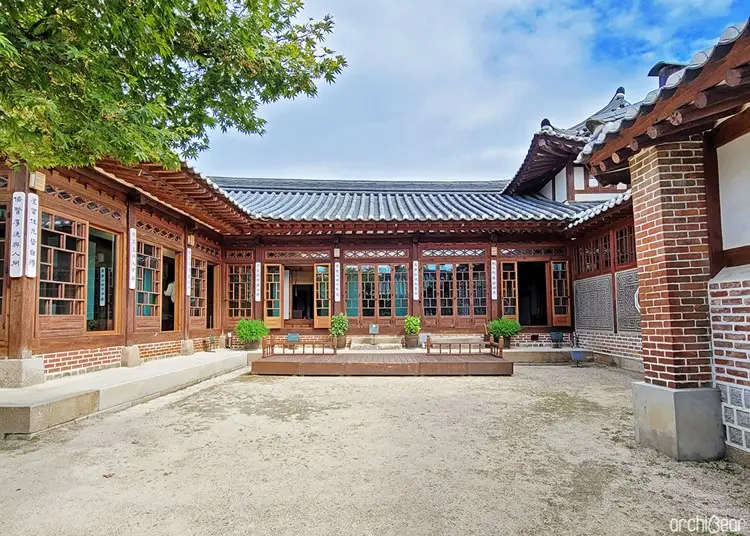

Guides share historical background, cultural significance, and interesting anecdotes about each location. English tours are available for international visitors. The tour route includes major sites like the hanok district of Gahoe-dong, Baek In-je House, and Yun Posun House, ending at Bukchon-ro 11-gil.


Advance reservations are required, especially for weekend tours (book at least a week ahead). Tours may move indoors during inclement weather.

Bukchon Cultural Center 37 Gyedong-gil, Jongno-gu, Seoul Tel: +82-2-741-1033
Hanok Village Visitor Etiquette

Always remember that Bukchon Hanok Village is an active residential area. As visitors, we must respect residents’ daily lives by following basic etiquette. The most crucial rule is minimizing noise.


Avoid loud conversations or playing music in the alleys, especially during early morning and late evening hours. Photography requires special consideration – don’t take photos near windows or doorways that might invade residents’ privacy, and limit flash photography.
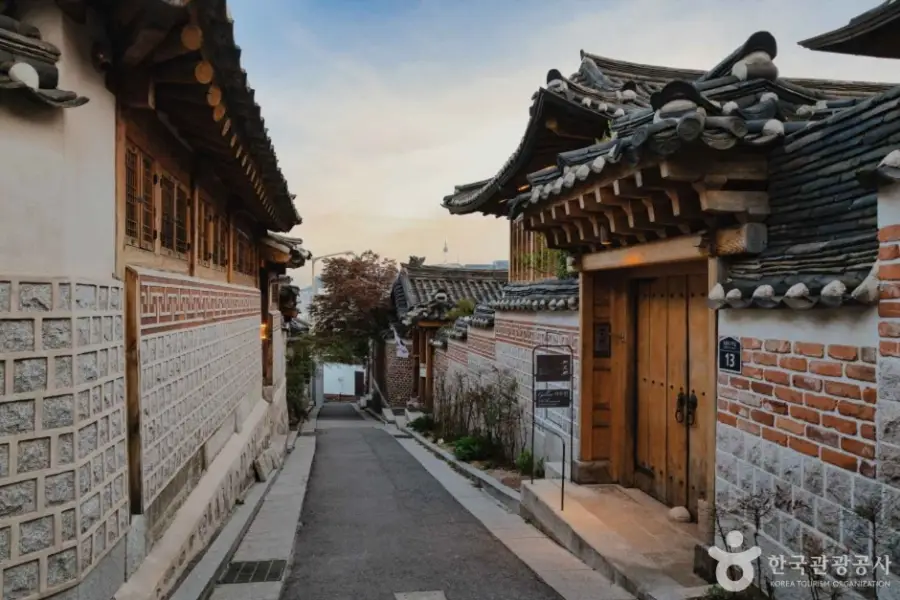
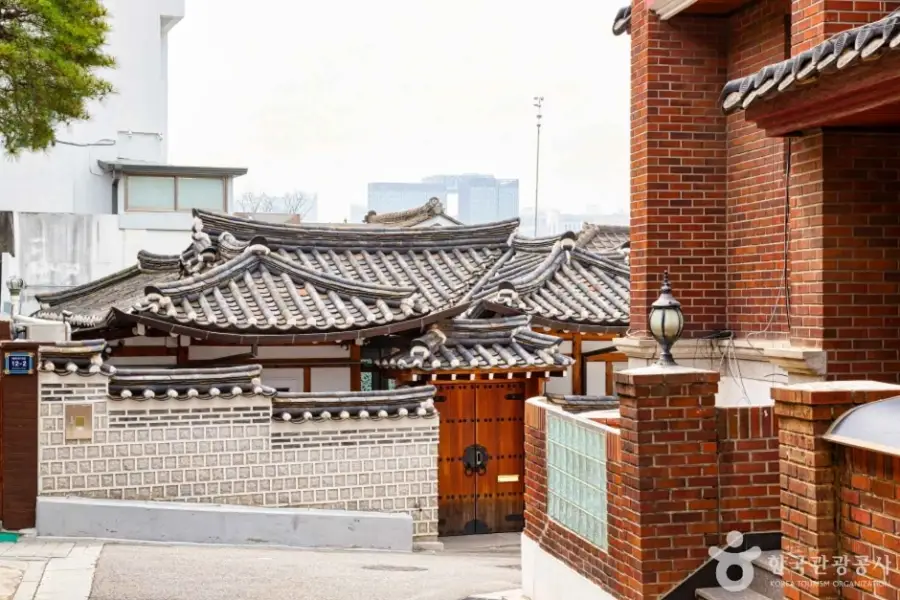
Additionally, avoid leaning on walls or doors for photos as this may damage the structures. Always dispose of trash in designated areas and clean up thoroughly after enjoying street food.
Tips for Avoiding Crowds
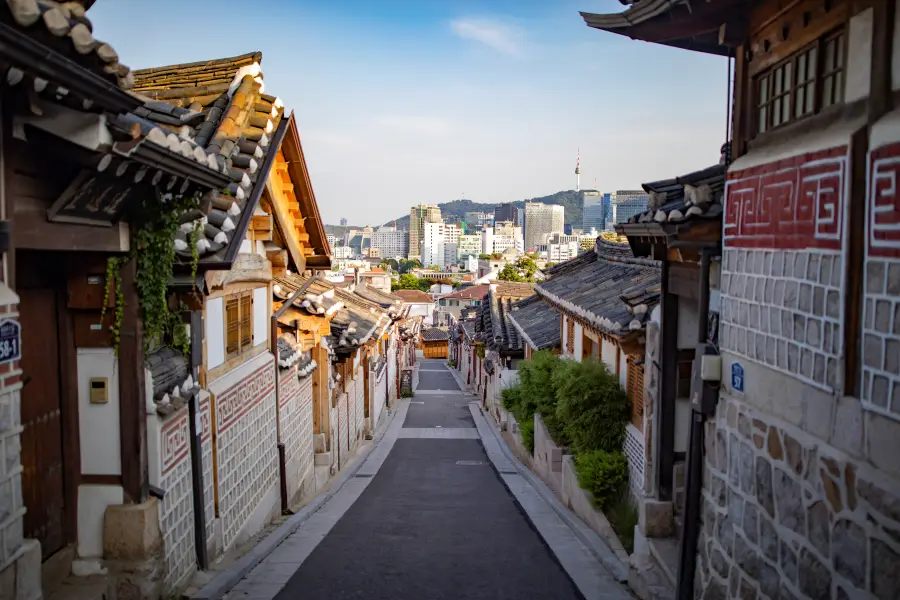
The biggest challenge when visiting Bukchon is avoiding peak tourist hours. On weekdays, the busiest period is from 11 AM to 4 PM. Bukchon-ro 11-gil and the Gahoe-dong 31 area become particularly crowded during weekend and holiday afternoons.

For the best experience, visit between 9-11 AM on weekdays, before tour buses arrive. This timing offers peaceful alley exploration and ideal lighting for photos. Alternatively, visit after 4 PM when group tours have departed and you can enjoy the atmospheric evening scenery.
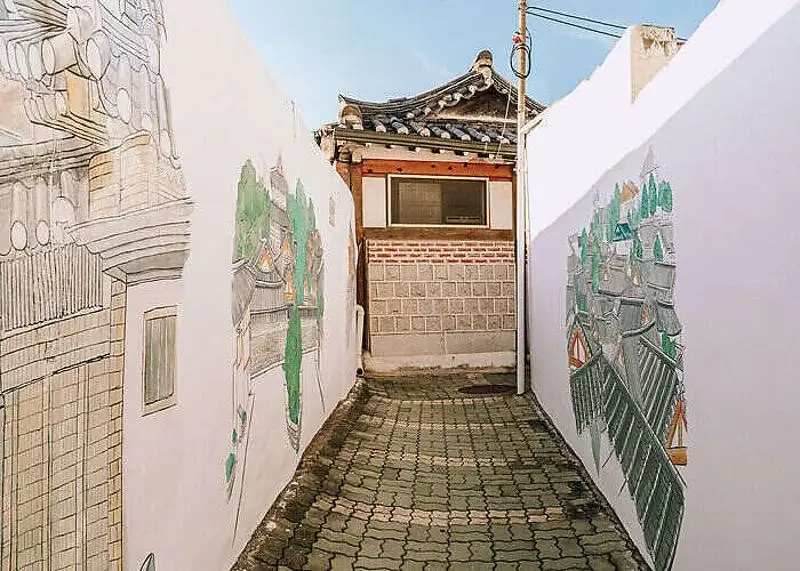
If visiting during lunch hours, consider taking alternative routes through Samcheong-dong or Gye-dong to avoid crowds. Rainy days typically see fewer visitors, offering a more relaxed experience. For guided tours, we recommend the first tour at 10 AM.
Is Bukchon Hanok Village
Worth Visiting?
Visit Bukchon Hanok Village, Where Time Stands Still

Hidden in the heart of modern Seoul lies a special treasure – Bukchon Hanok Village. As you walk through its 600-year-old alleys, you’ll feel time slow to a peaceful halt. The elegant curves of tiled roofs and charming stone walls create scenes that could have stepped straight from a traditional painting.

Here, Korean tradition and modernity blend seamlessly. Centuries-old hanoks house artistic galleries and workshops, while traditional teahouses stand alongside modern cafes. Each narrow alley tells its own story, making hours pass like minutes as you explore.
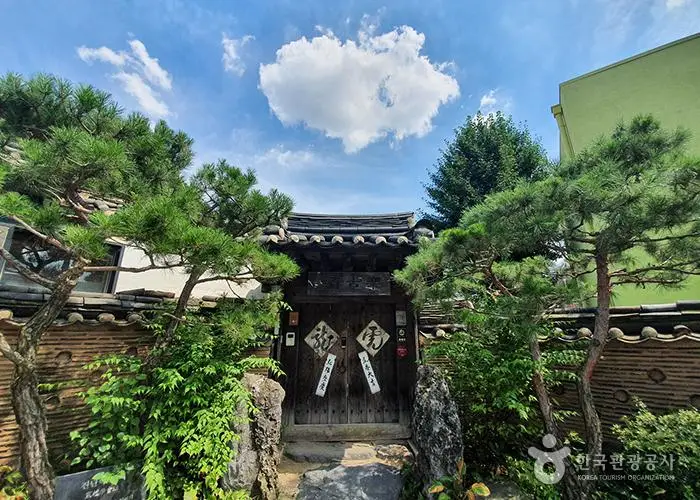

Each season brings its own charm: spring cherry blossoms adorning hanok eaves, cool summer shadows beneath the roofs, autumn leaves painting the stone walls, and winter snow creating a blanket of white on the tiled roofs. This is where even a simple photo of someone in hanbok naturally captures artistic beauty.


Pause for a moment to feel the spirit of past generations. Escape the busy world to stroll among peaceful hanoks and savor a quiet cup of tea. Create your own special memories in this timeless place. Bukchon Hanok Village warmly welcomes you, any time you visit.

Frequently Asked Questions
4. Review
What Travelers Are Saying
5. Near by
Top Spots to Explore
Near Bukchon Hanok Village
- Gyeongbokgung Palace
- Changdeokgung Palace
- Insadong
Gyeongbokgung Palace
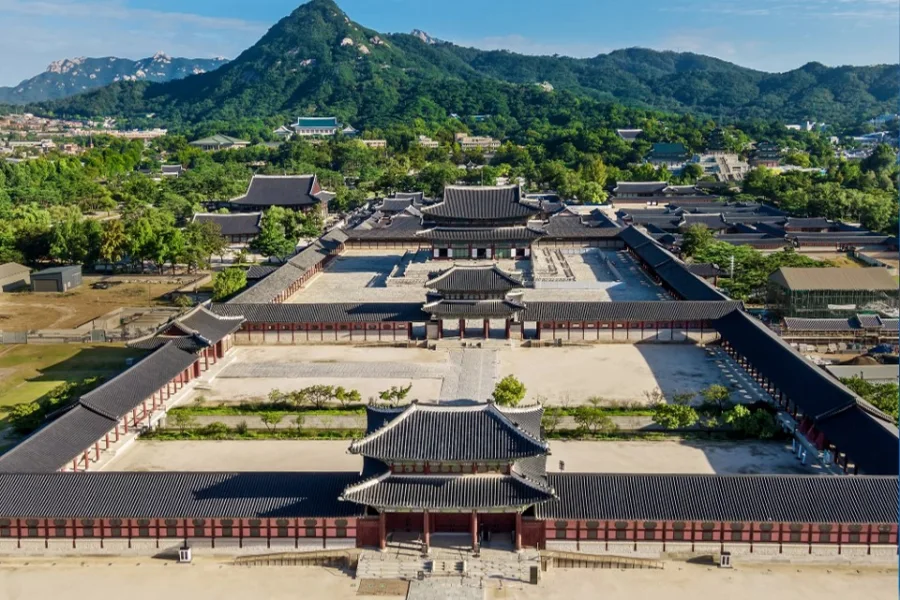
Just a 10-minute walk from Bukchon Hanok Village lies Gyeongbokgung, the main palace of the Joseon Dynasty. Built in 1395 by King Taejo, it served as Korea’s political and cultural center. Today, visitors can explore well-preserved structures like Gwanghwamun Gate, Geunjeongjeon Hall, Gyeonghoeru Pavilion, and Hyangwonjeong Pavilion, which showcase the dynasty’s majestic architecture.
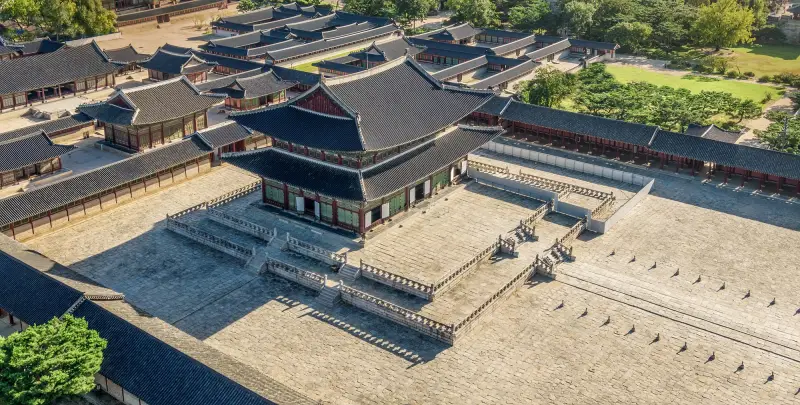
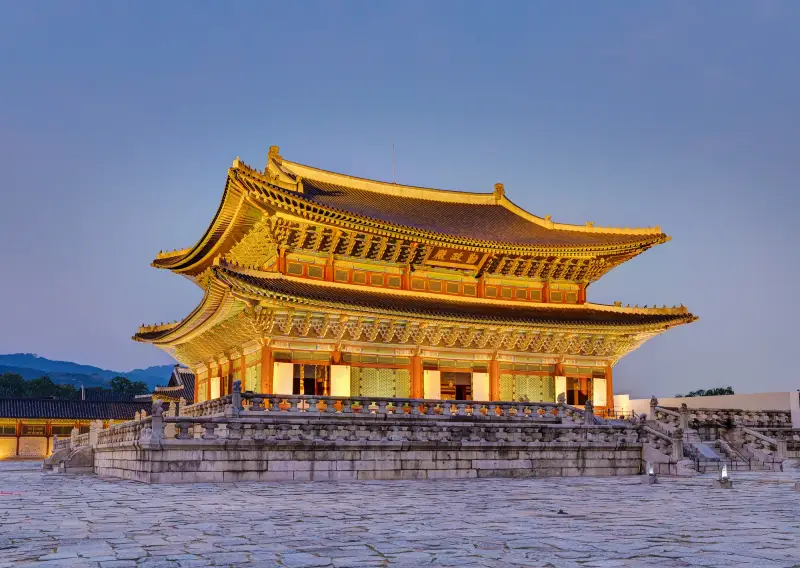
Geunjeongjeon, the main throne hall where coronations and royal audiences were held, features impressive scale and intricate traditional paintwork. Don’t miss the hourly royal guard changing ceremony. For a deeper understanding, join one of four daily guided tours.
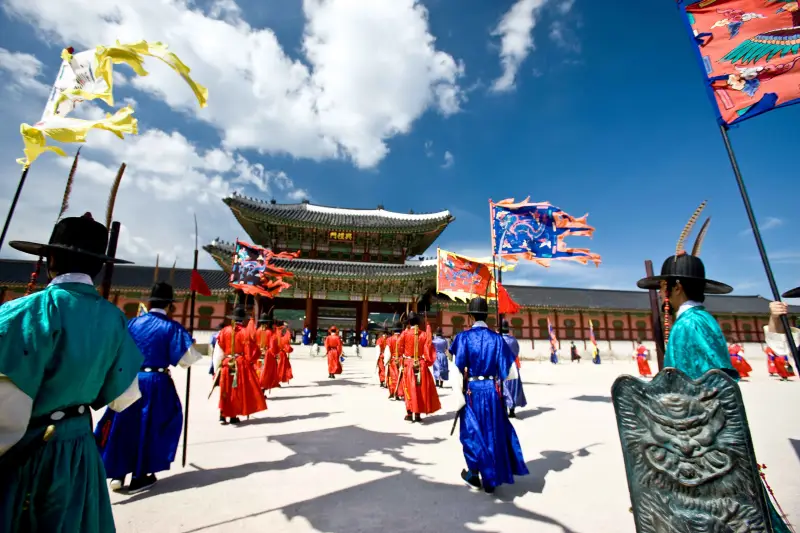
Open Tuesday through Sunday, admission is 3,000 won (approximately $2.50) for adults. From Bukchon, it’s a 10-minute walk from Anguk Station.
Changdeokgung Palace

Changdeokgung Palace, a UNESCO World Heritage site east of Bukchon, offers different charms from Gyeongbokgung. This palace exemplifies traditional Korean landscaping where architecture harmonizes with nature.

The Secret Garden (Huwon) is particularly notable, offering unique seasonal views. With its ponds, pavilions, and streams, it resembles a traditional ink painting. The palace is a 15-minute walk from Bukchon via Anguk Station toward Jongno.

The Secret Garden requires advance reservations. Palace admission is 3,000 won ($2.50), with an additional 5,000 won ($4) for the Secret Garden. Closed Mondays.
Insadong
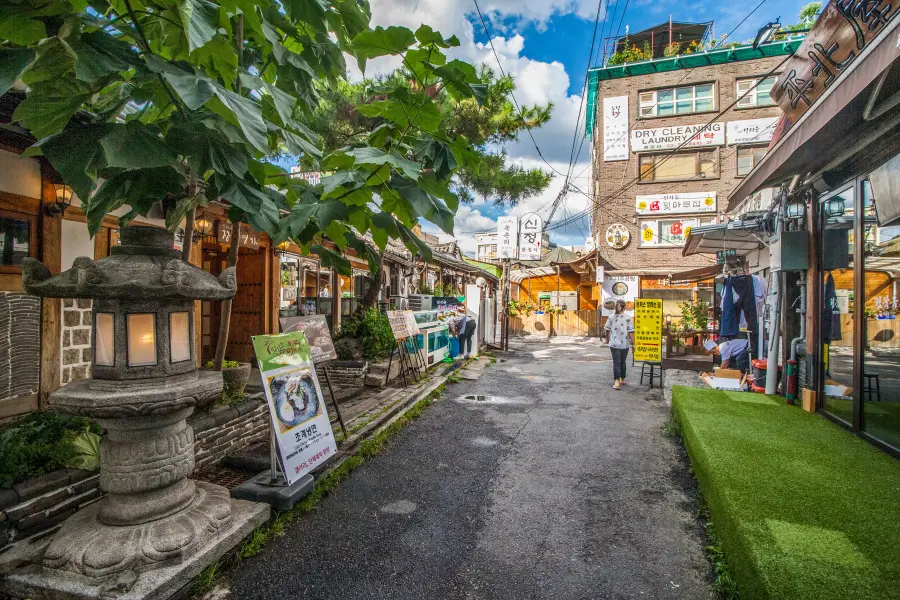
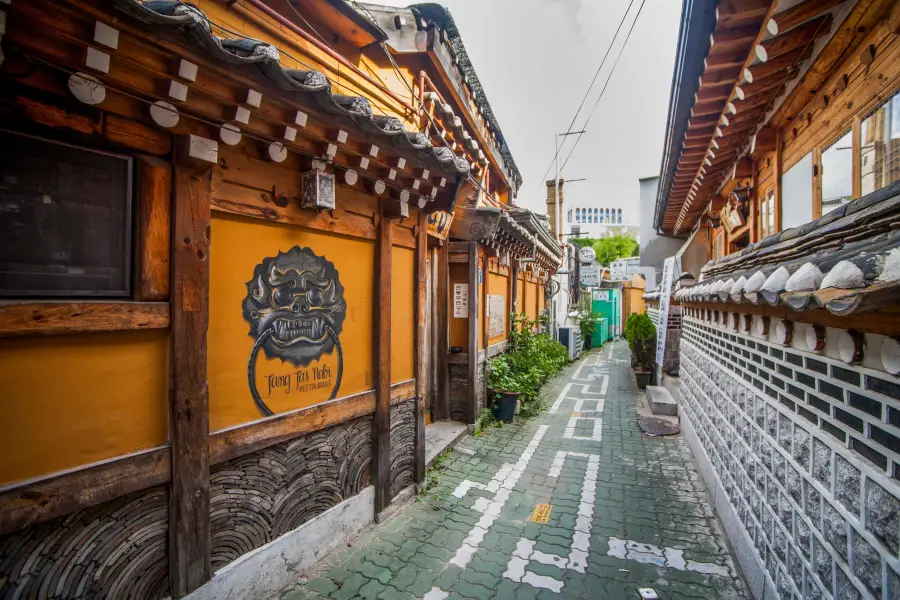
A 10-minute walk from Bukchon, Insadong is Korea’s traditional cultural arts district. The main street and side alleys house traditional craft shops, antique stores, art galleries, Korean paper shops, and traditional teahouses. The street becomes pedestrian-only on weekends.
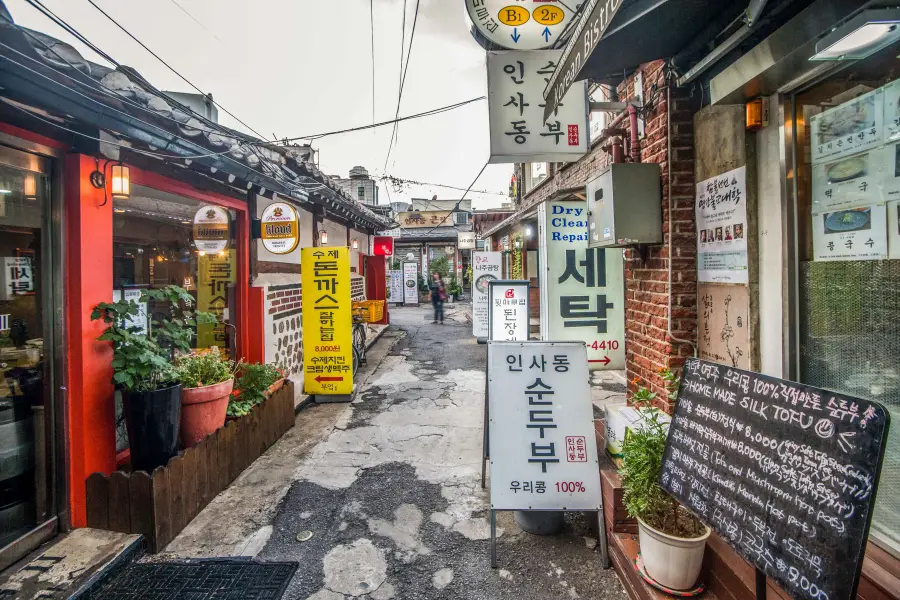
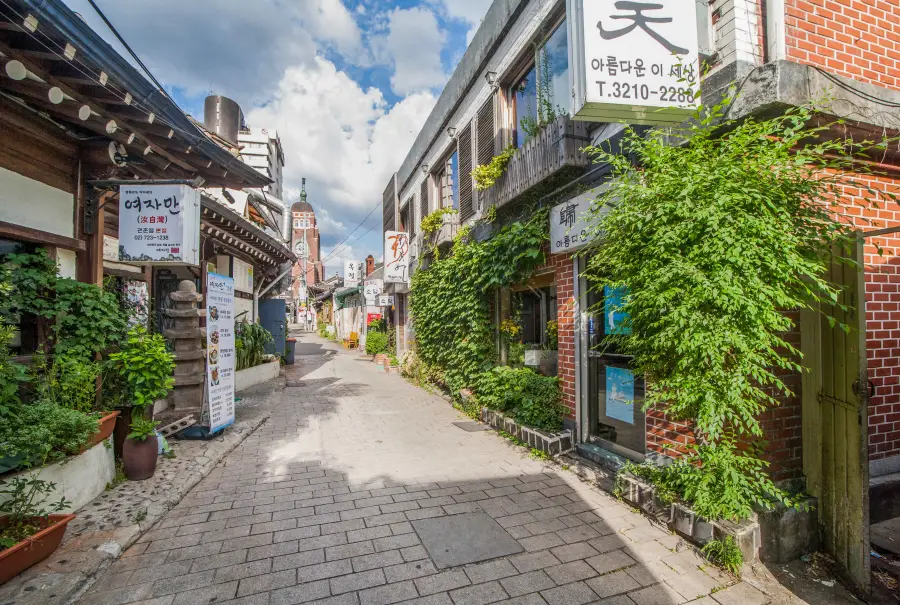
Enjoy traditional Korean cuisine, from street food to full course meals. Ssamziegil is a popular shopping complex featuring modern interpretations of traditional crafts. Access is easy – just head toward Anguk Station from Bukchon.
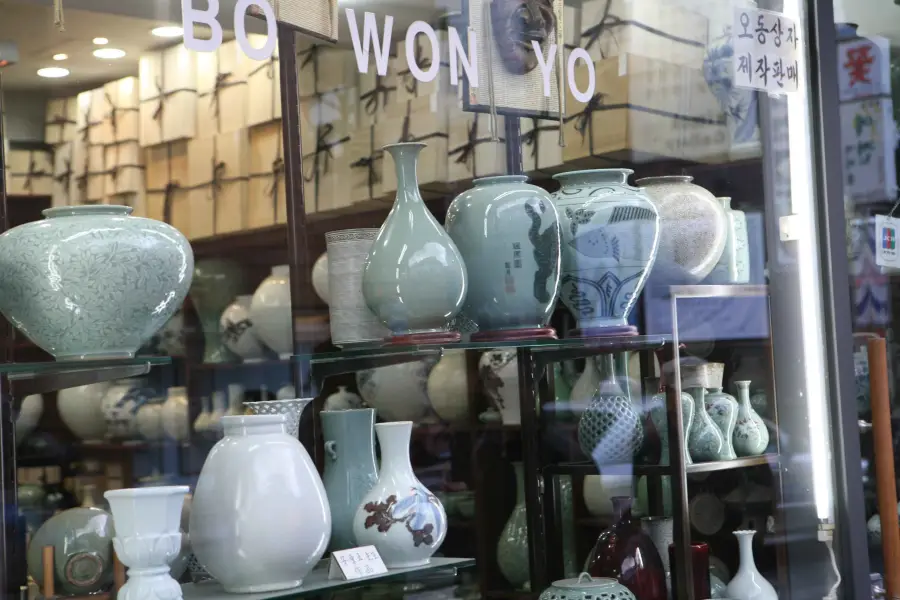
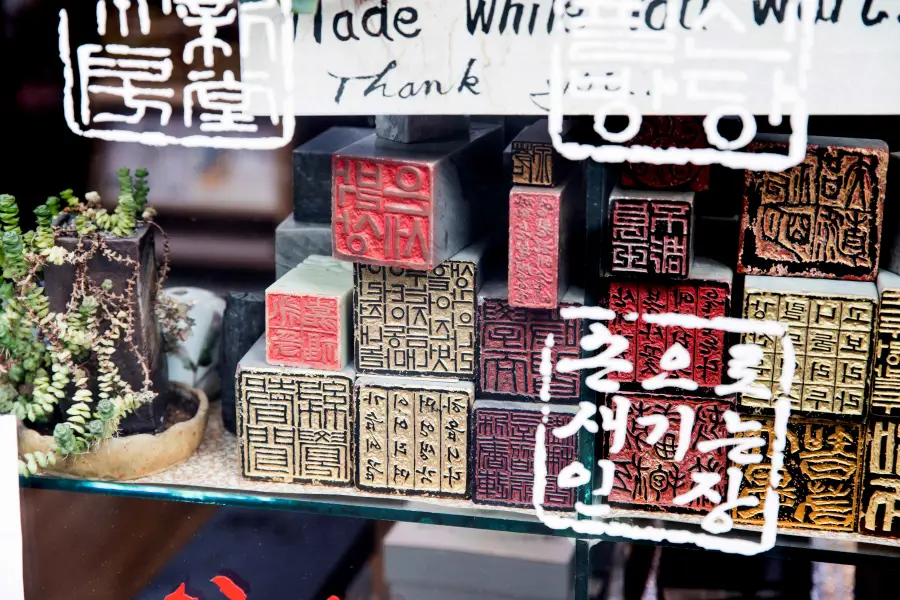
Most shops operate 10 AM to 8 PM, with many closed on Mondays.

